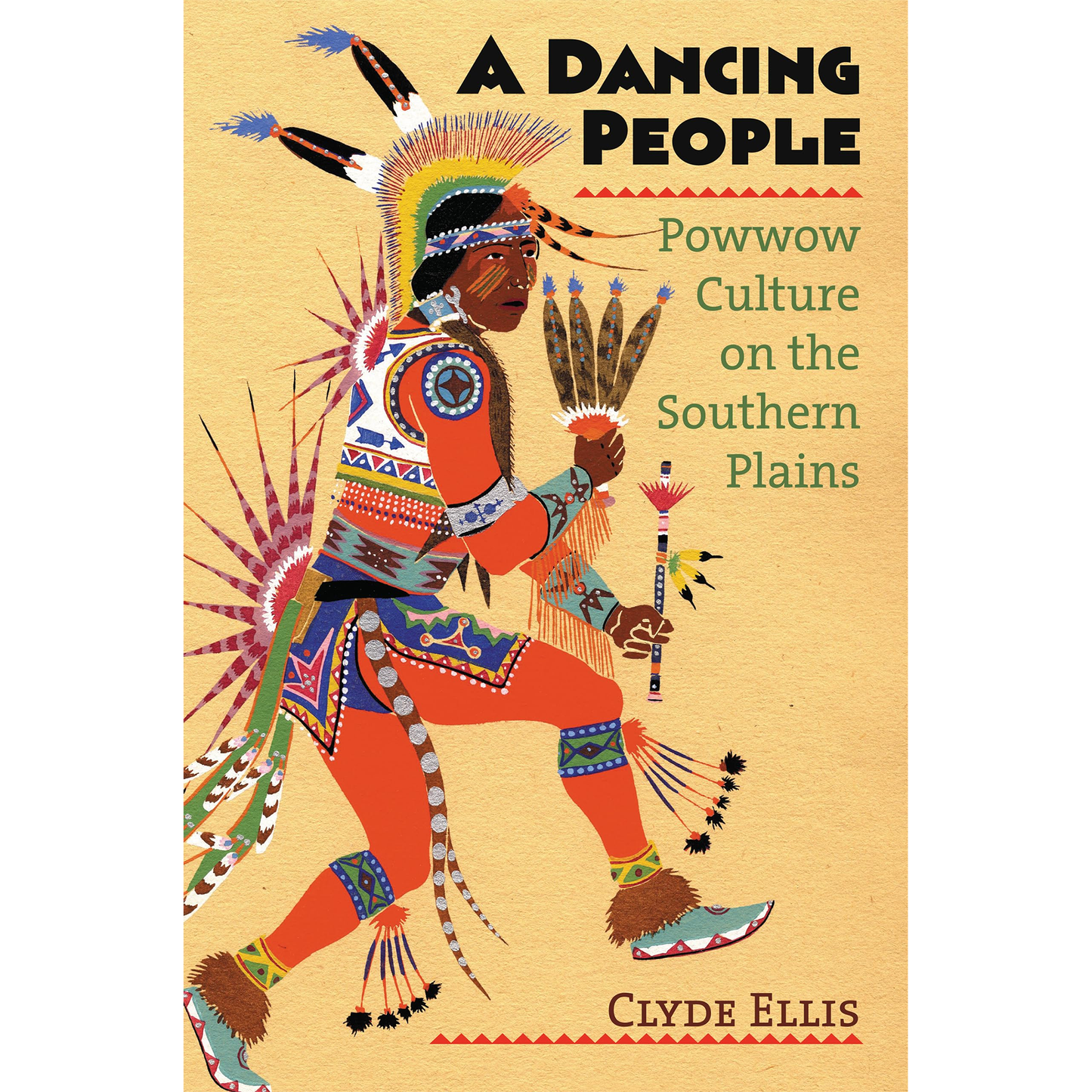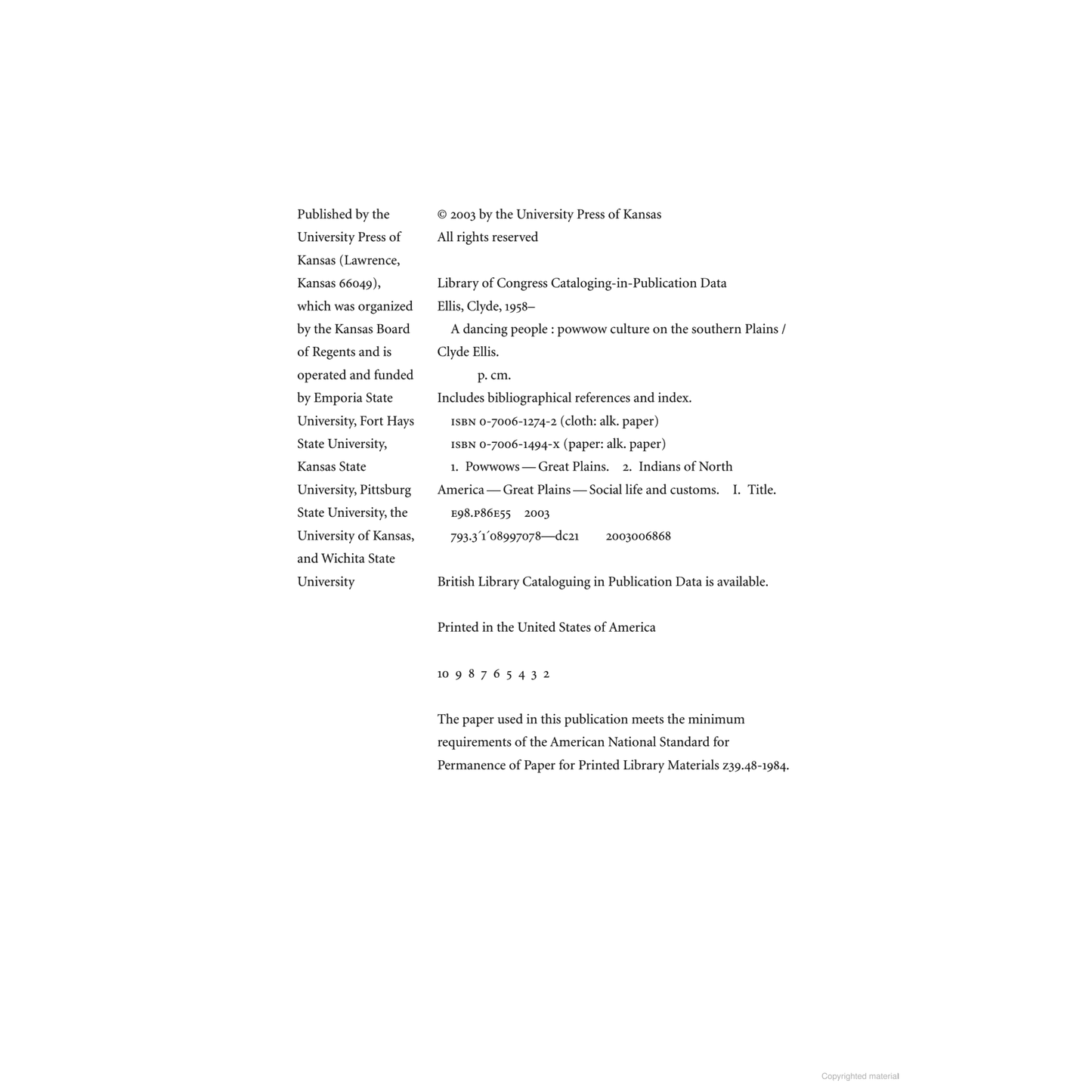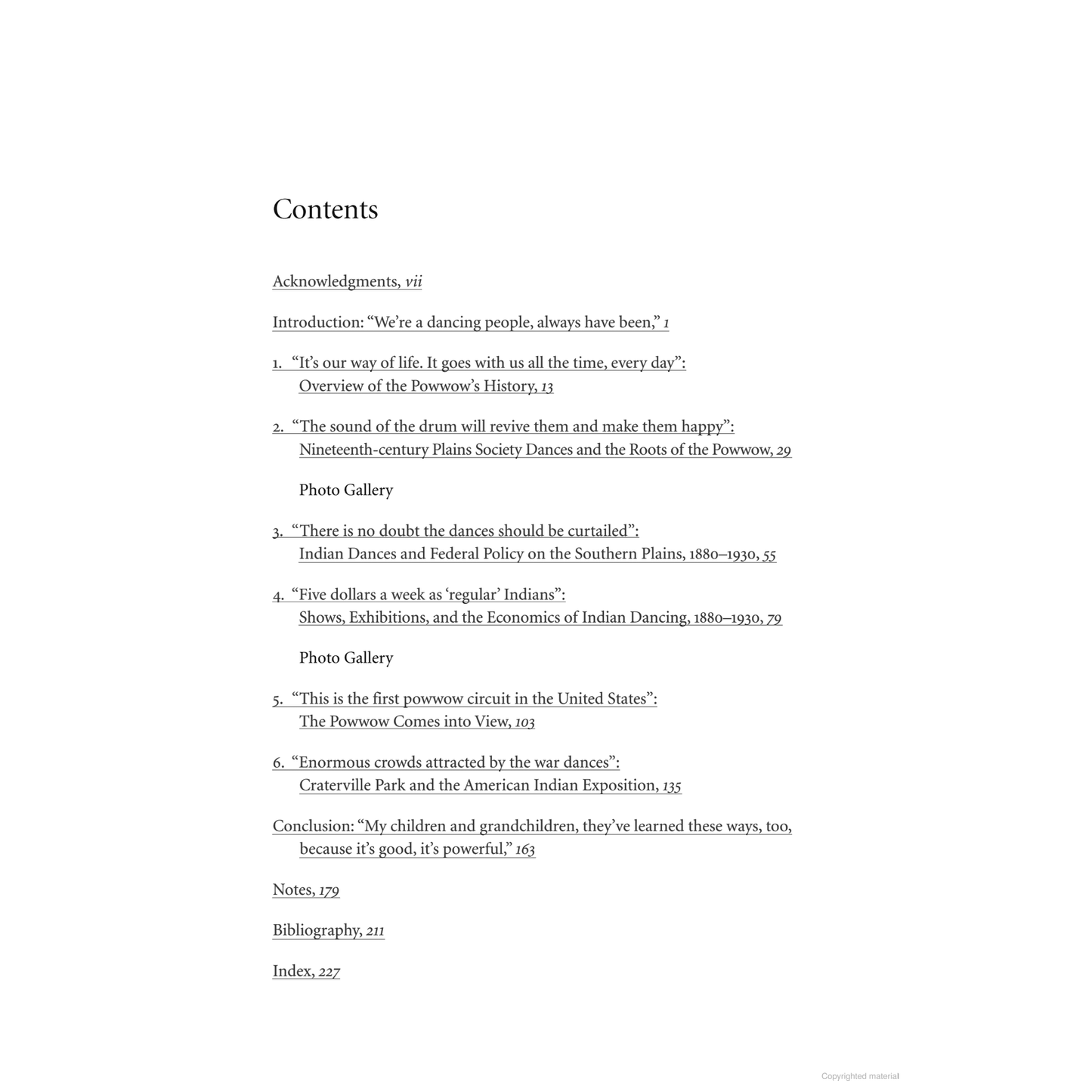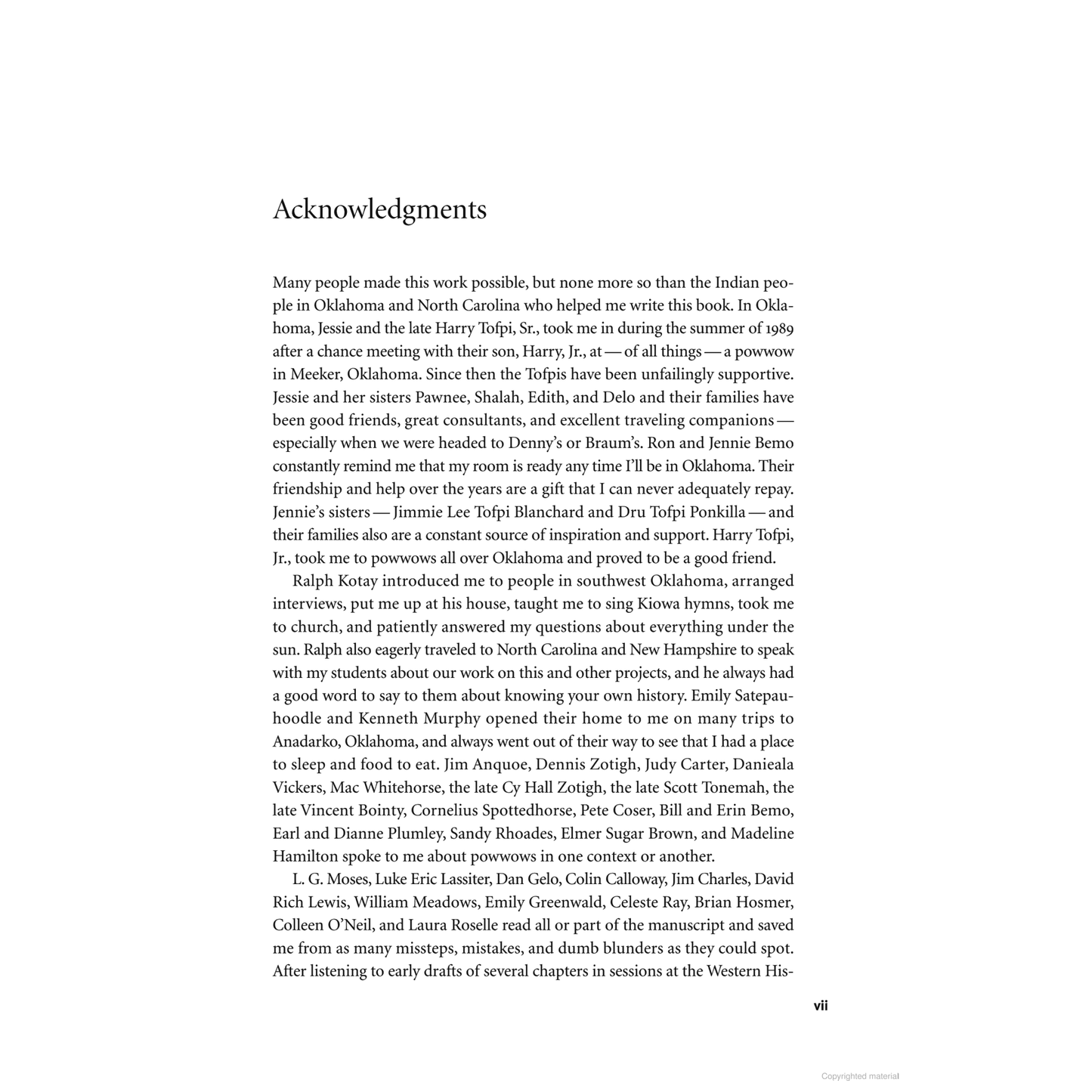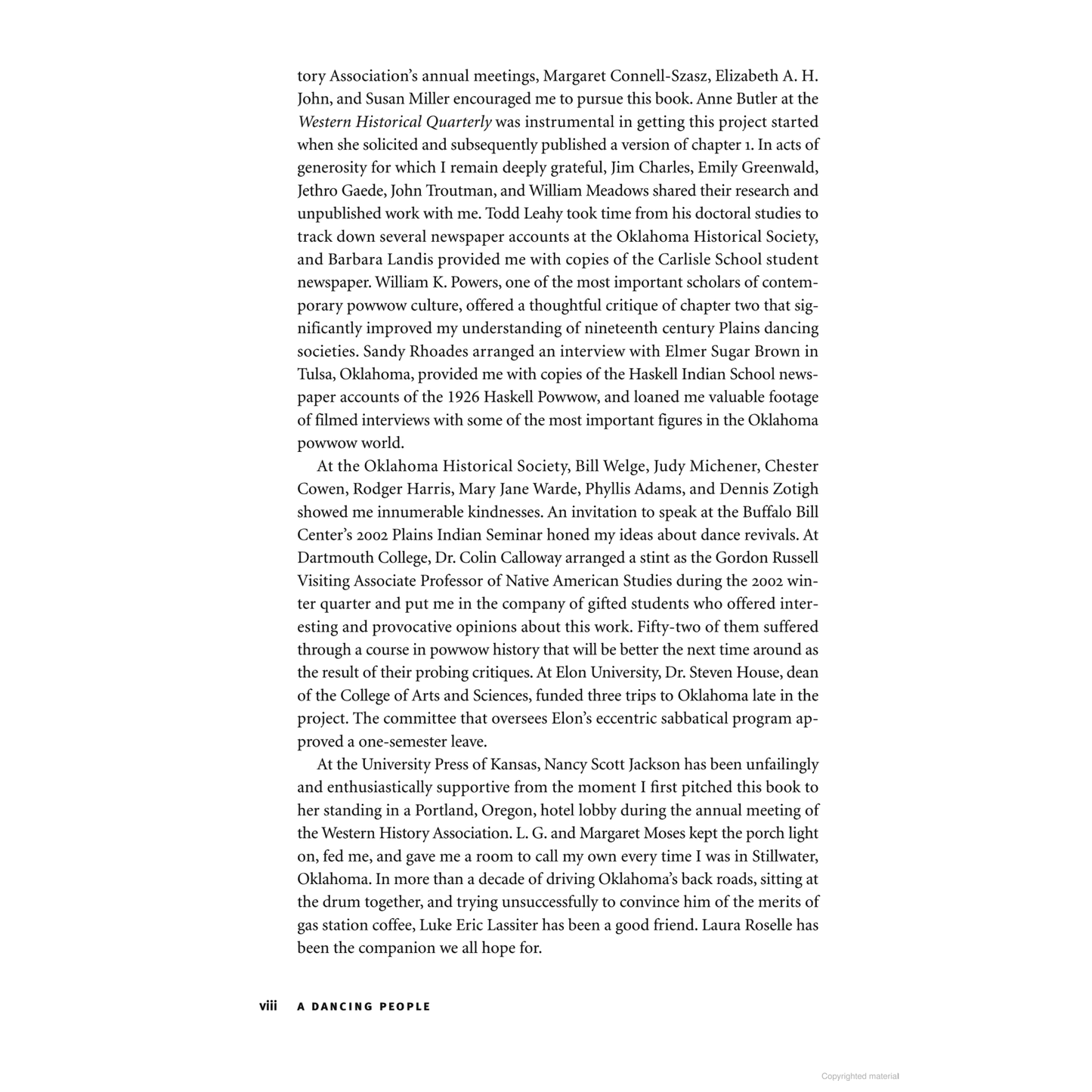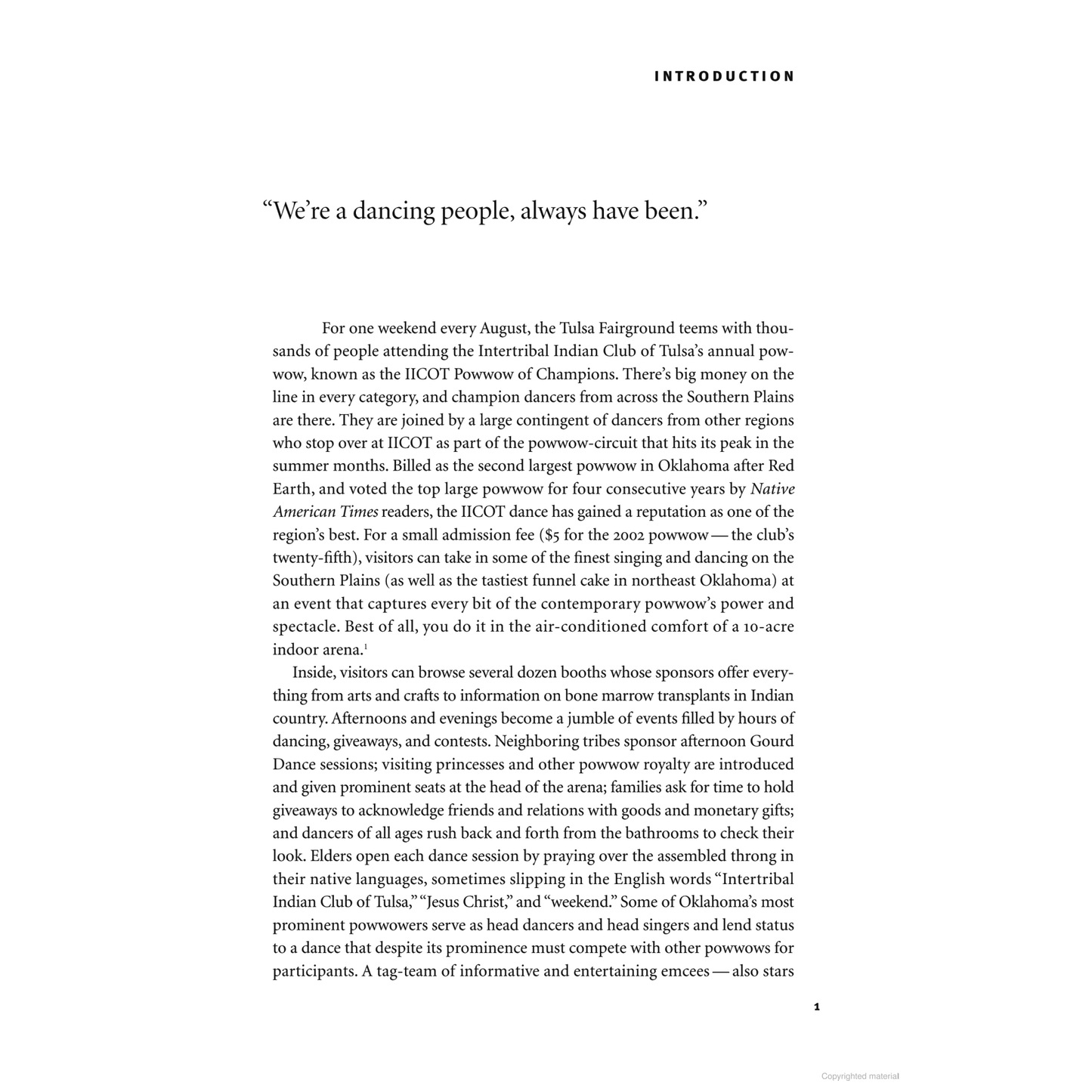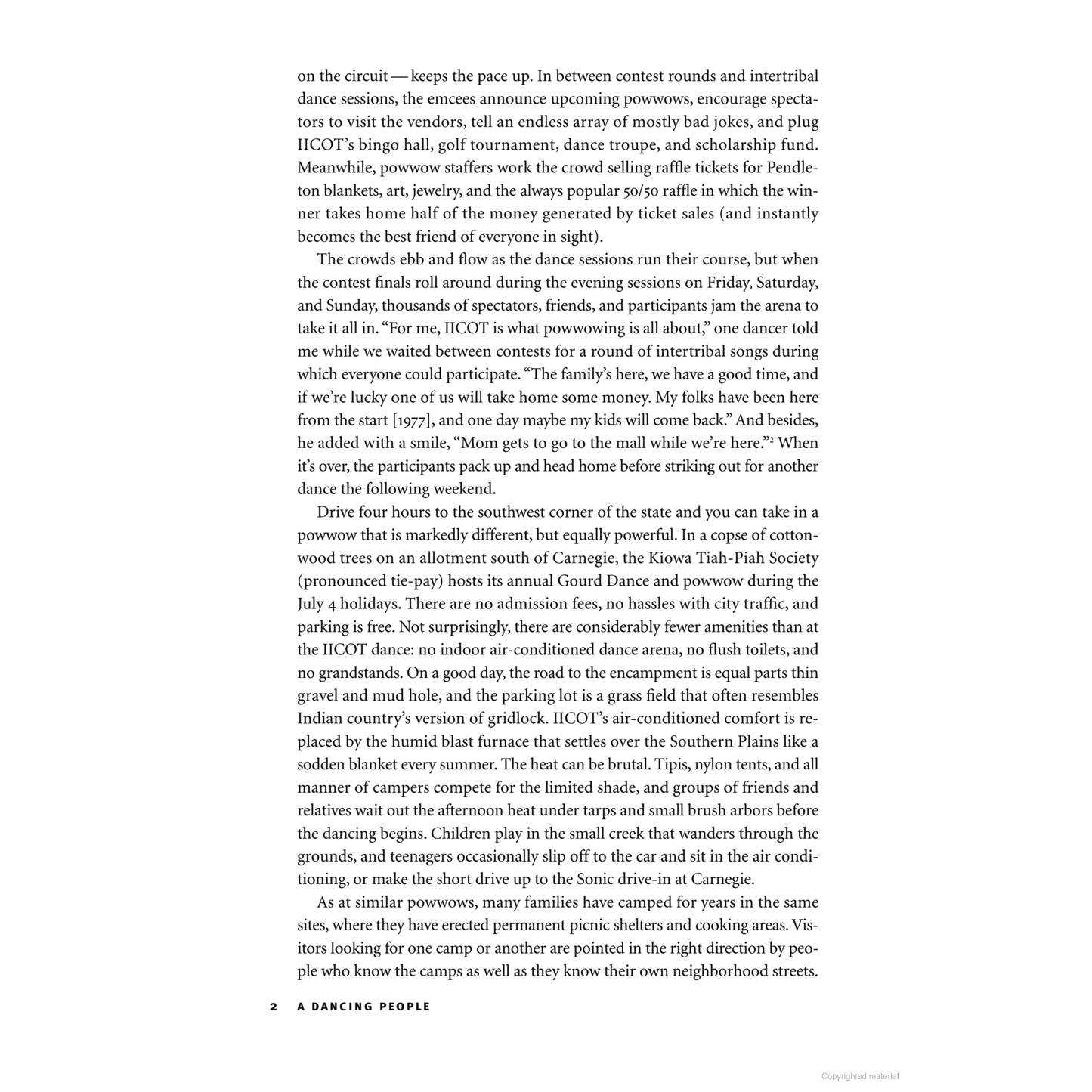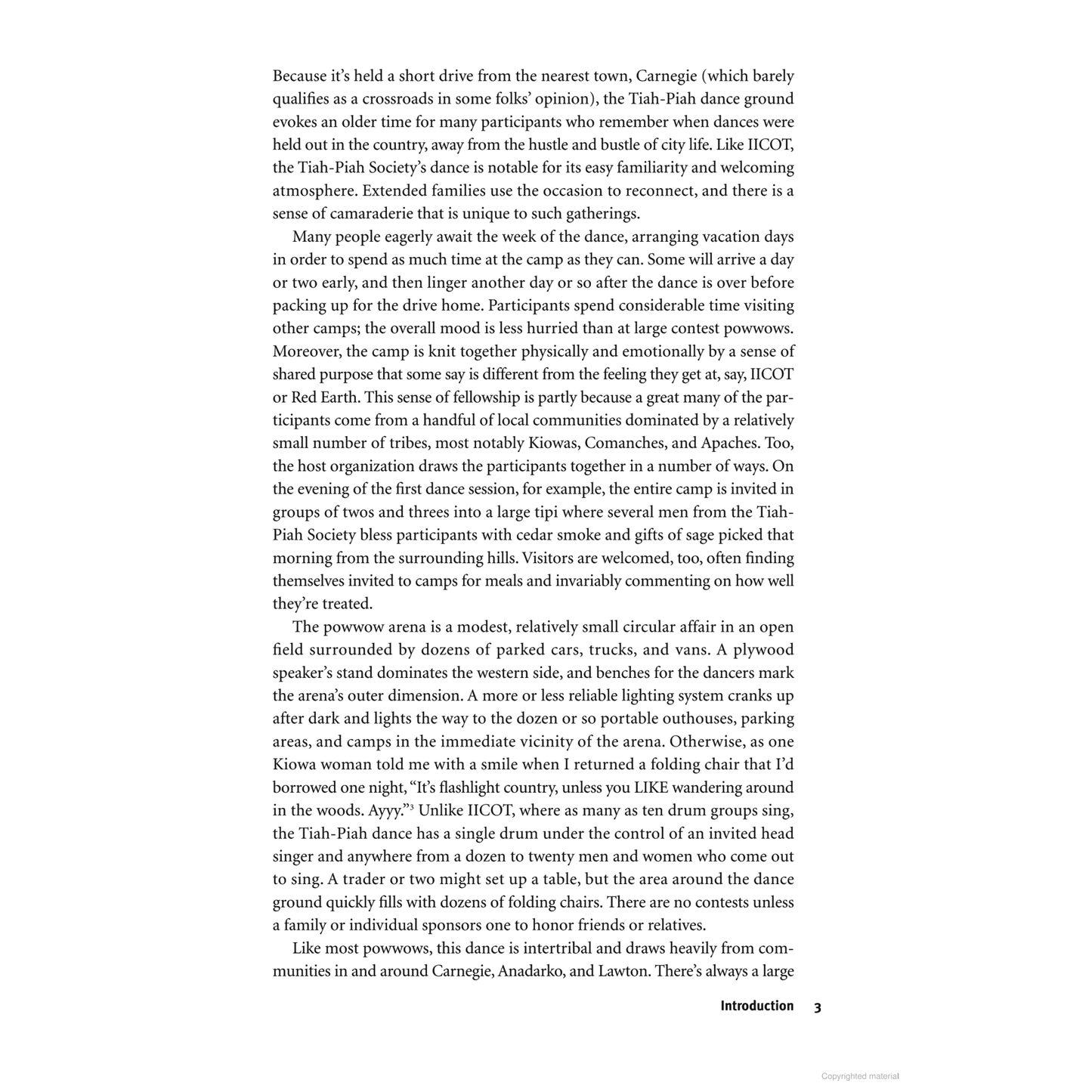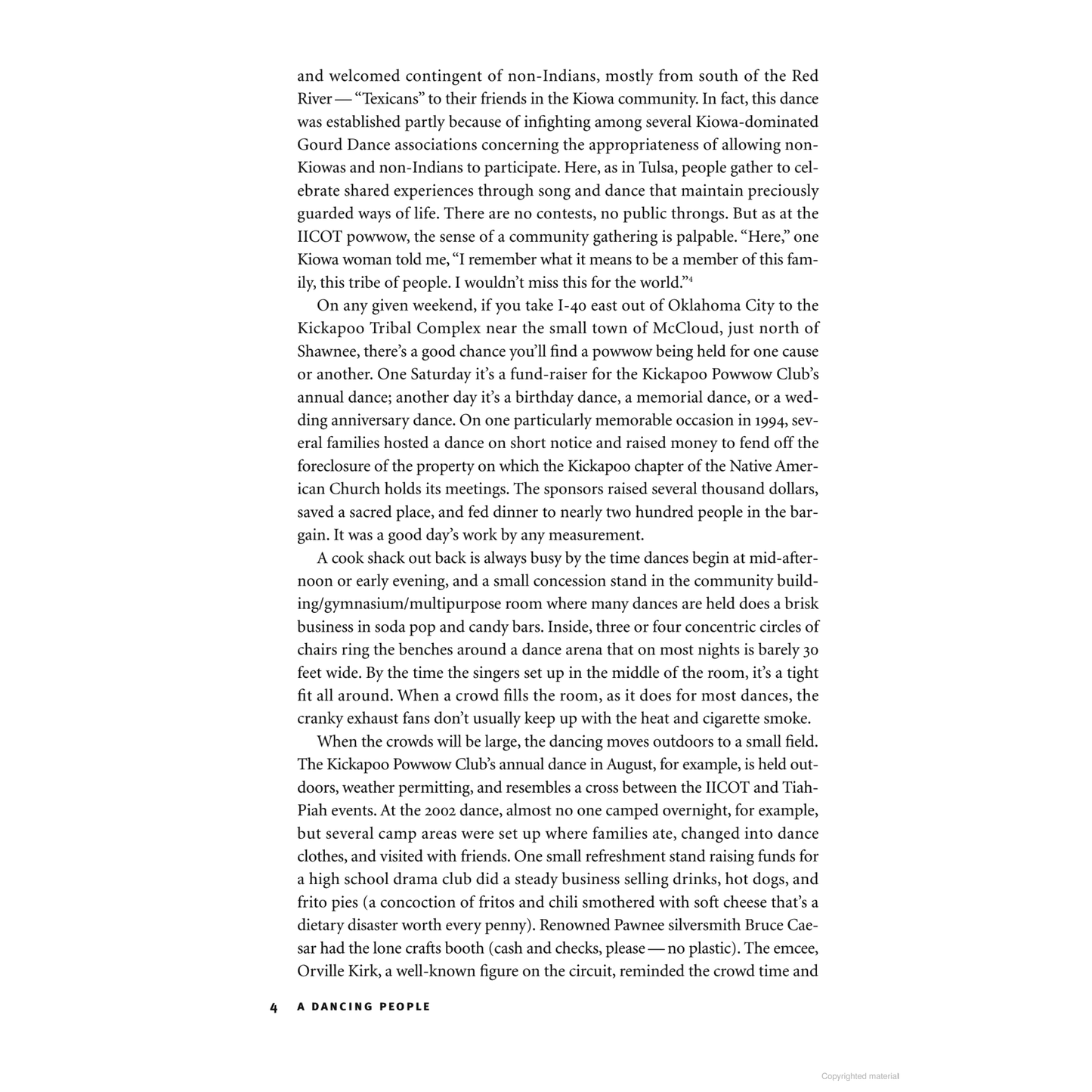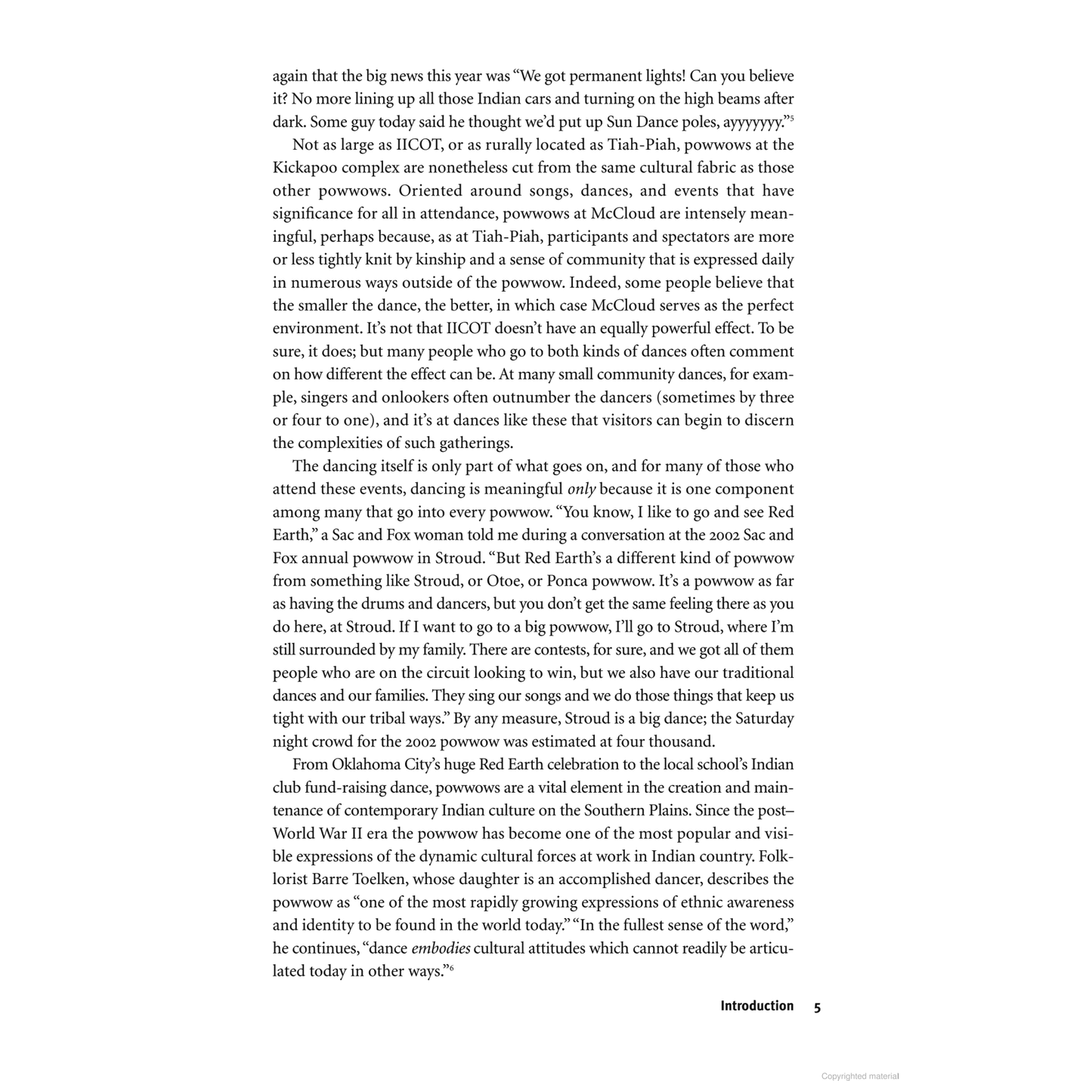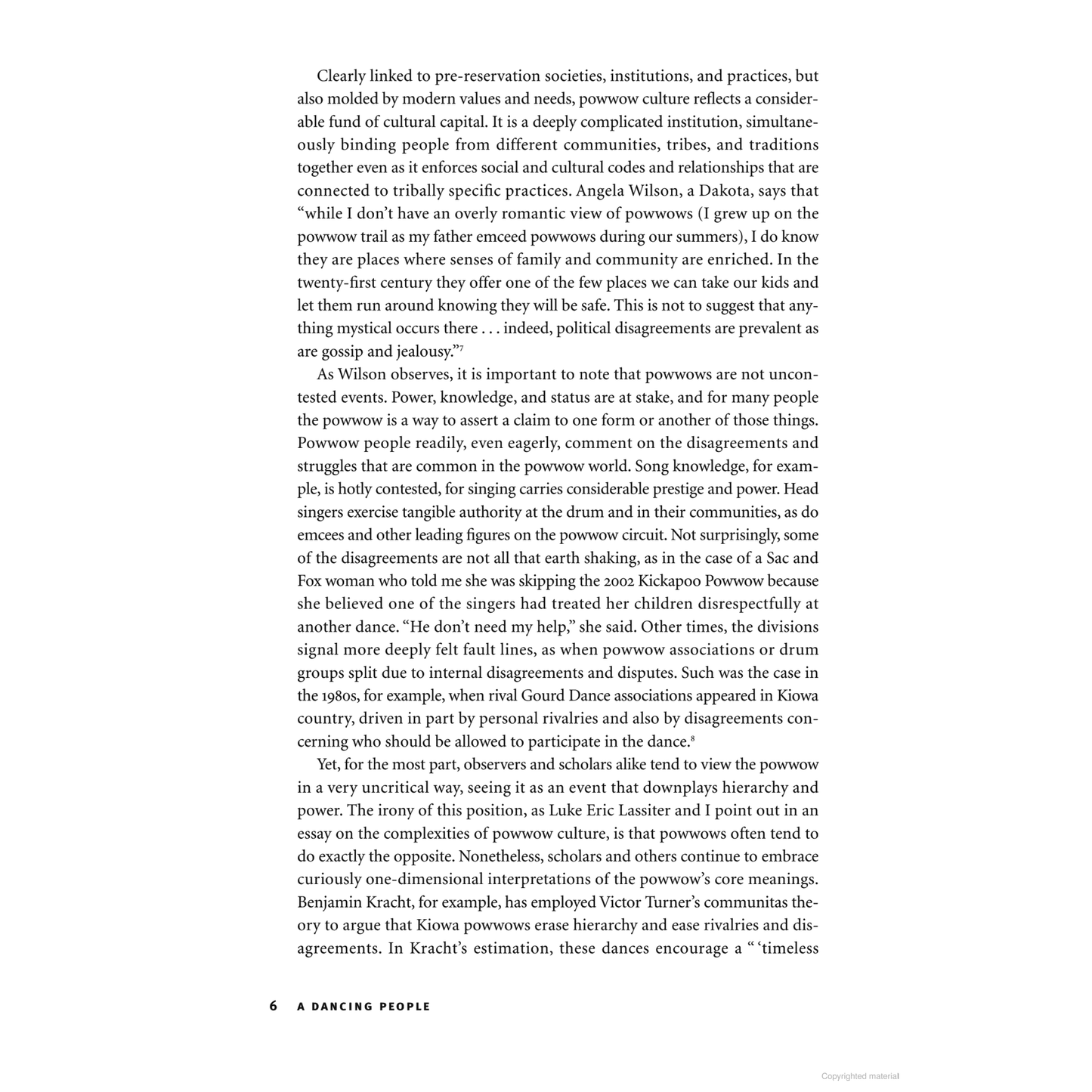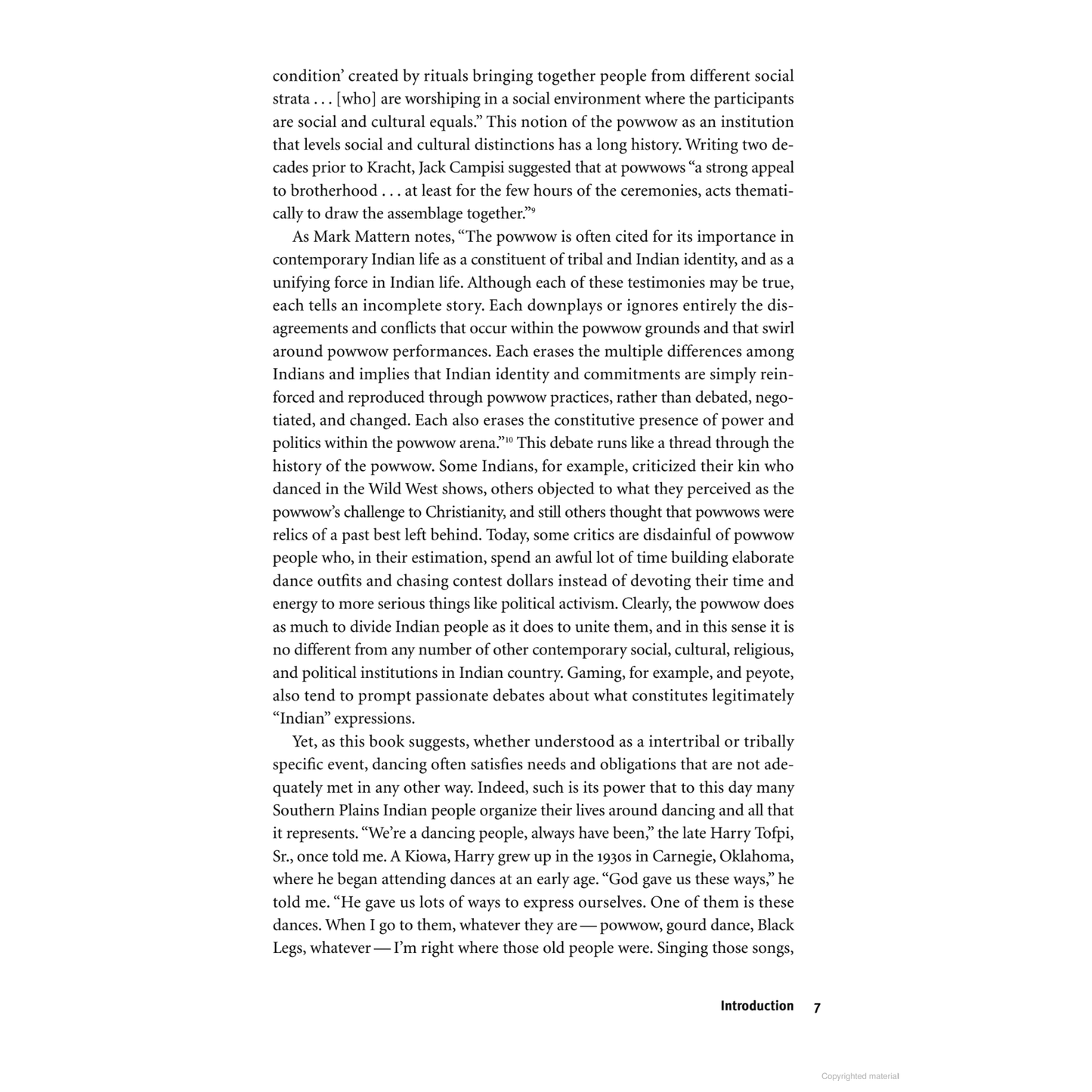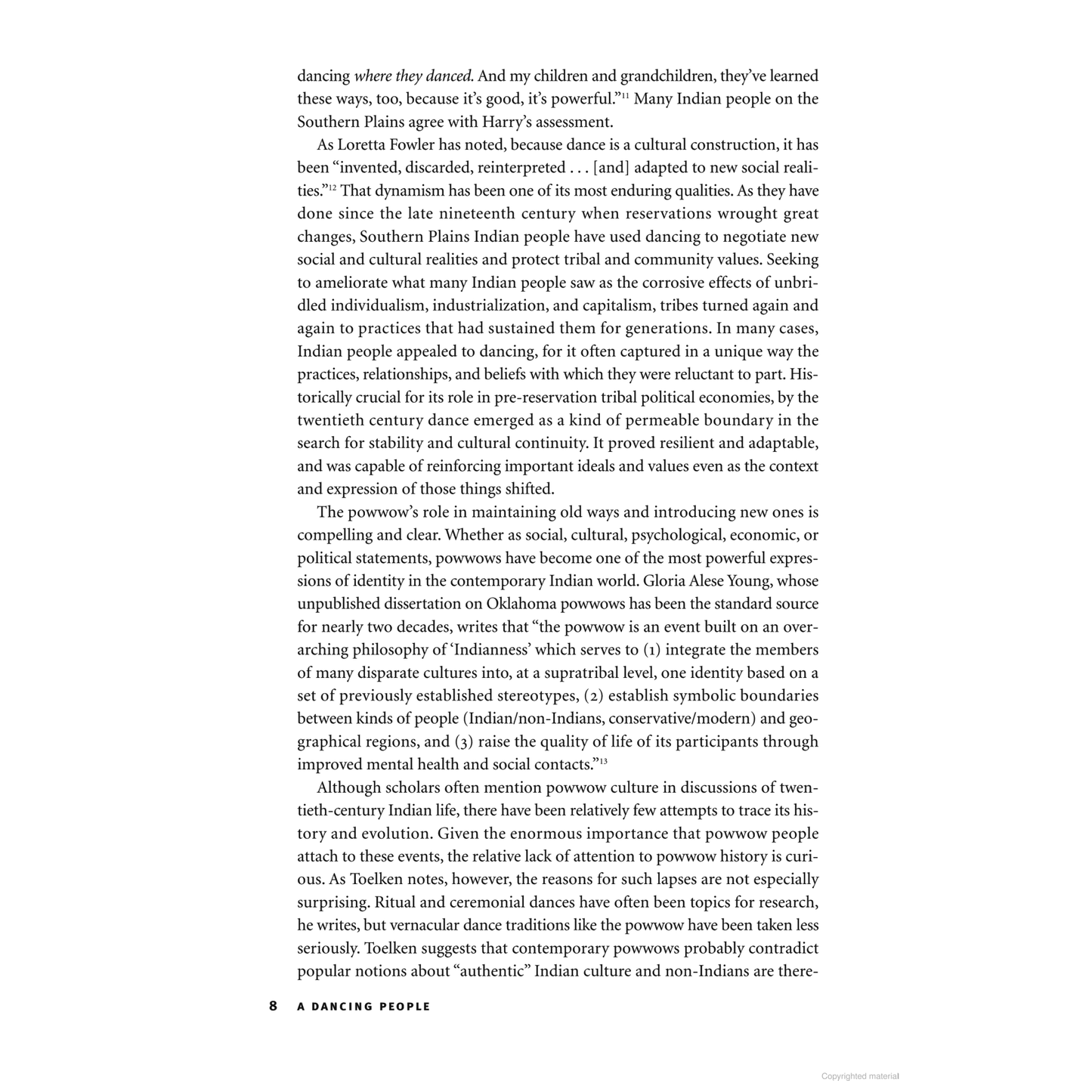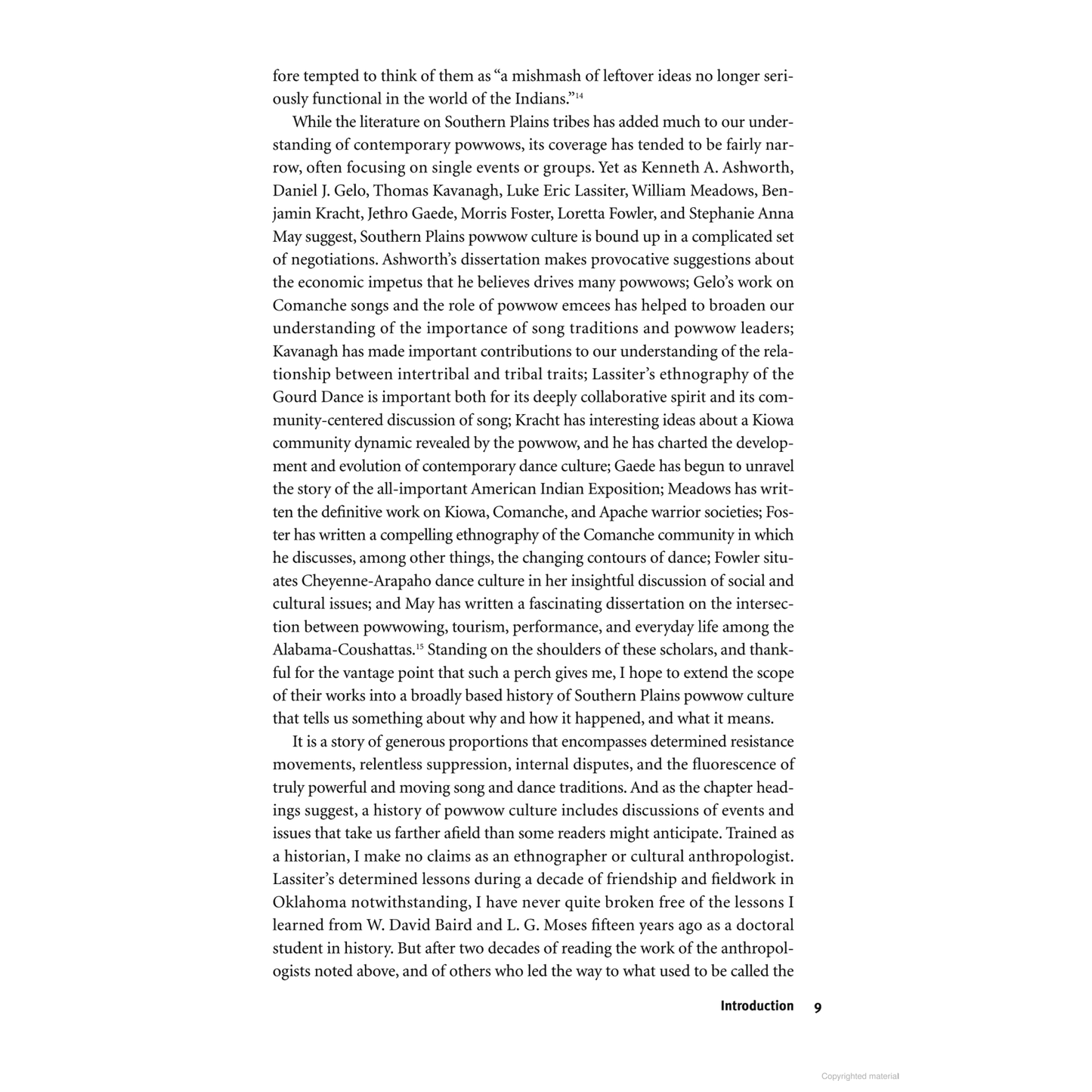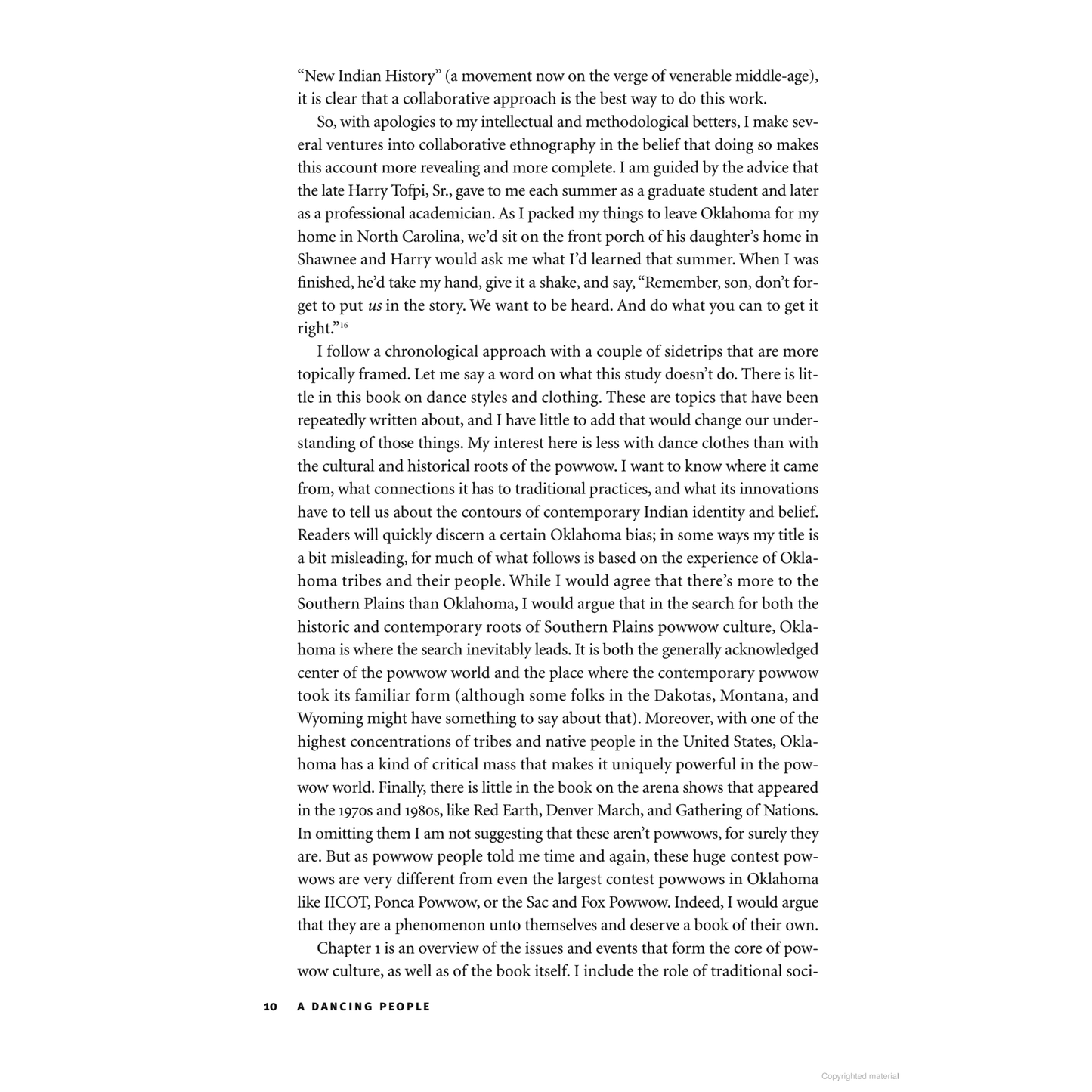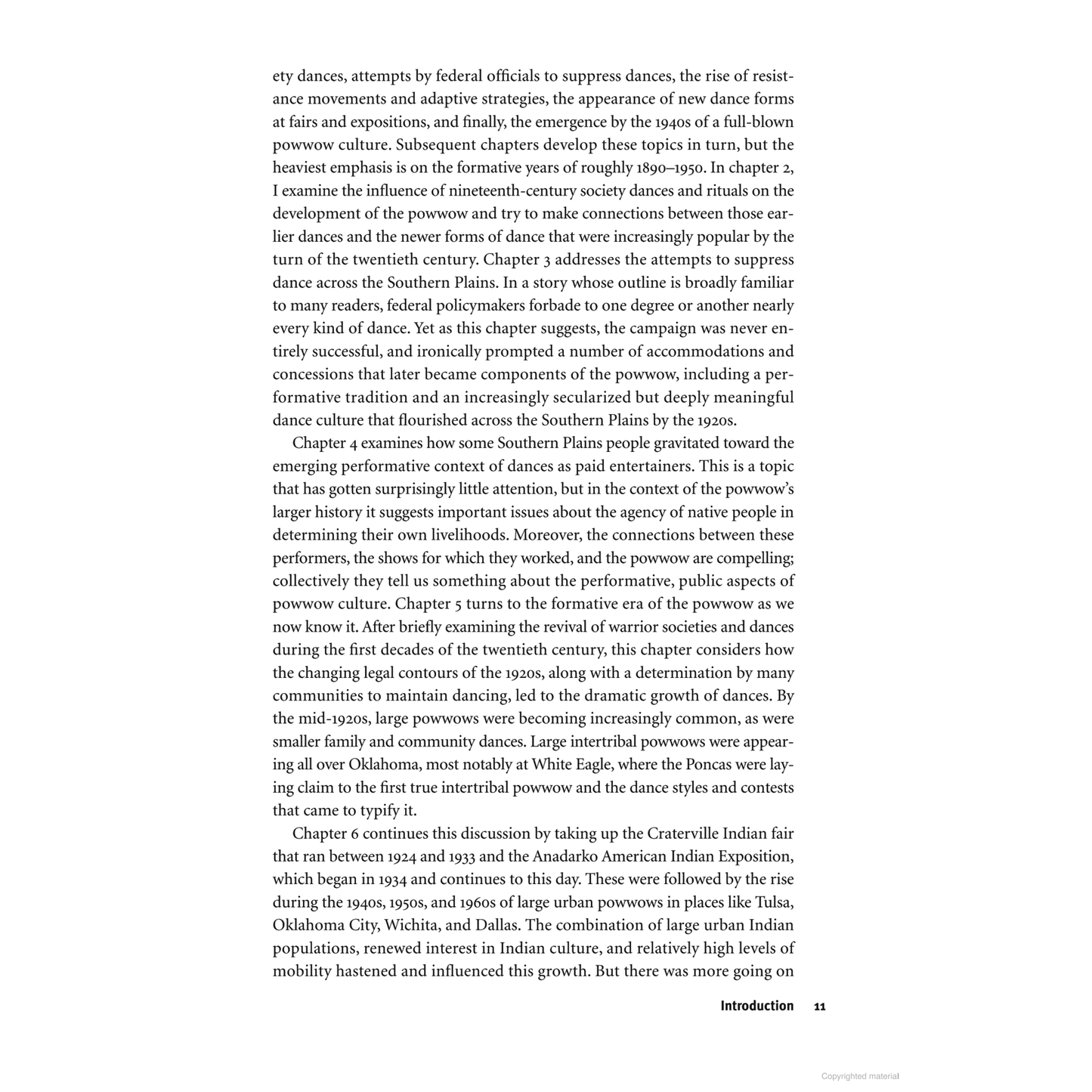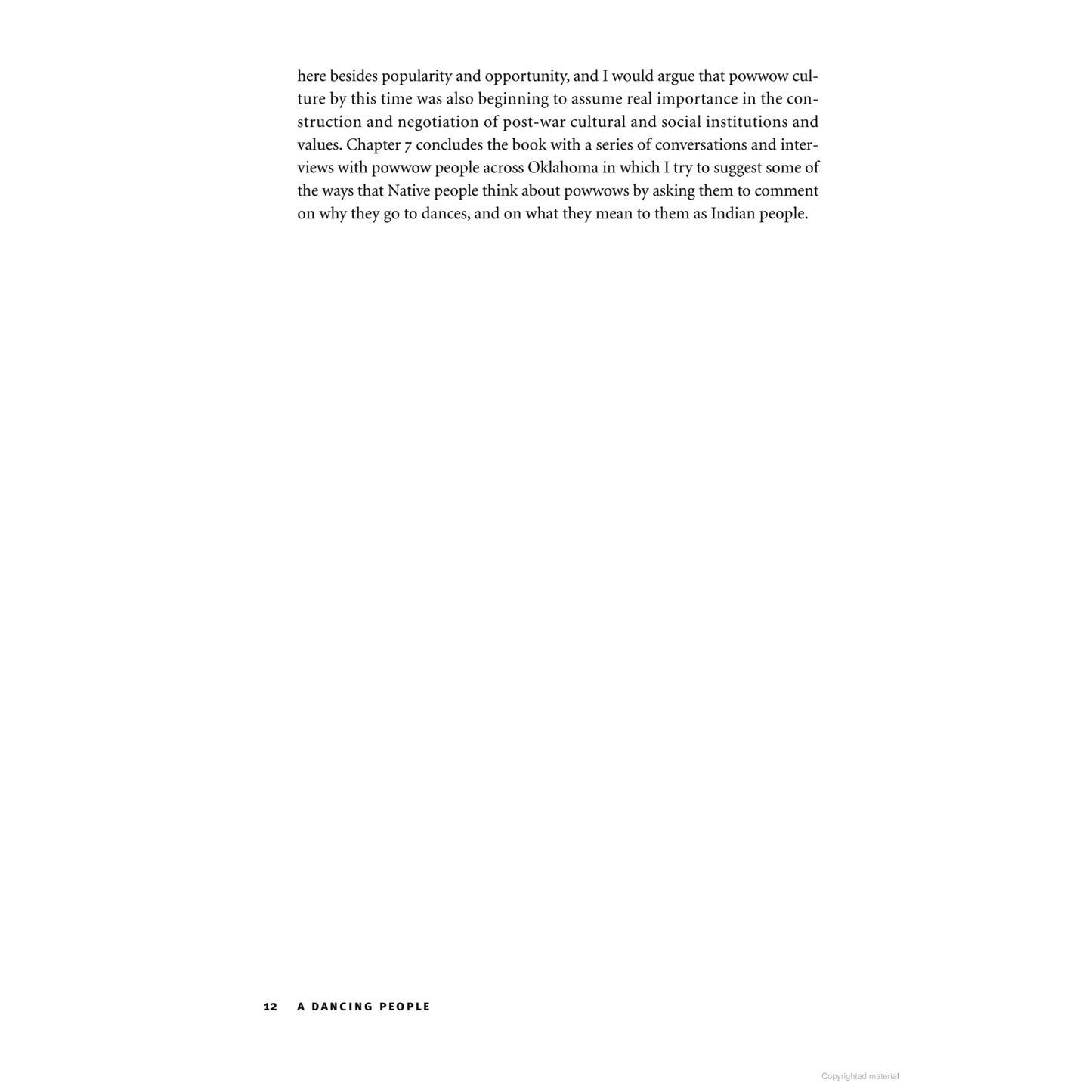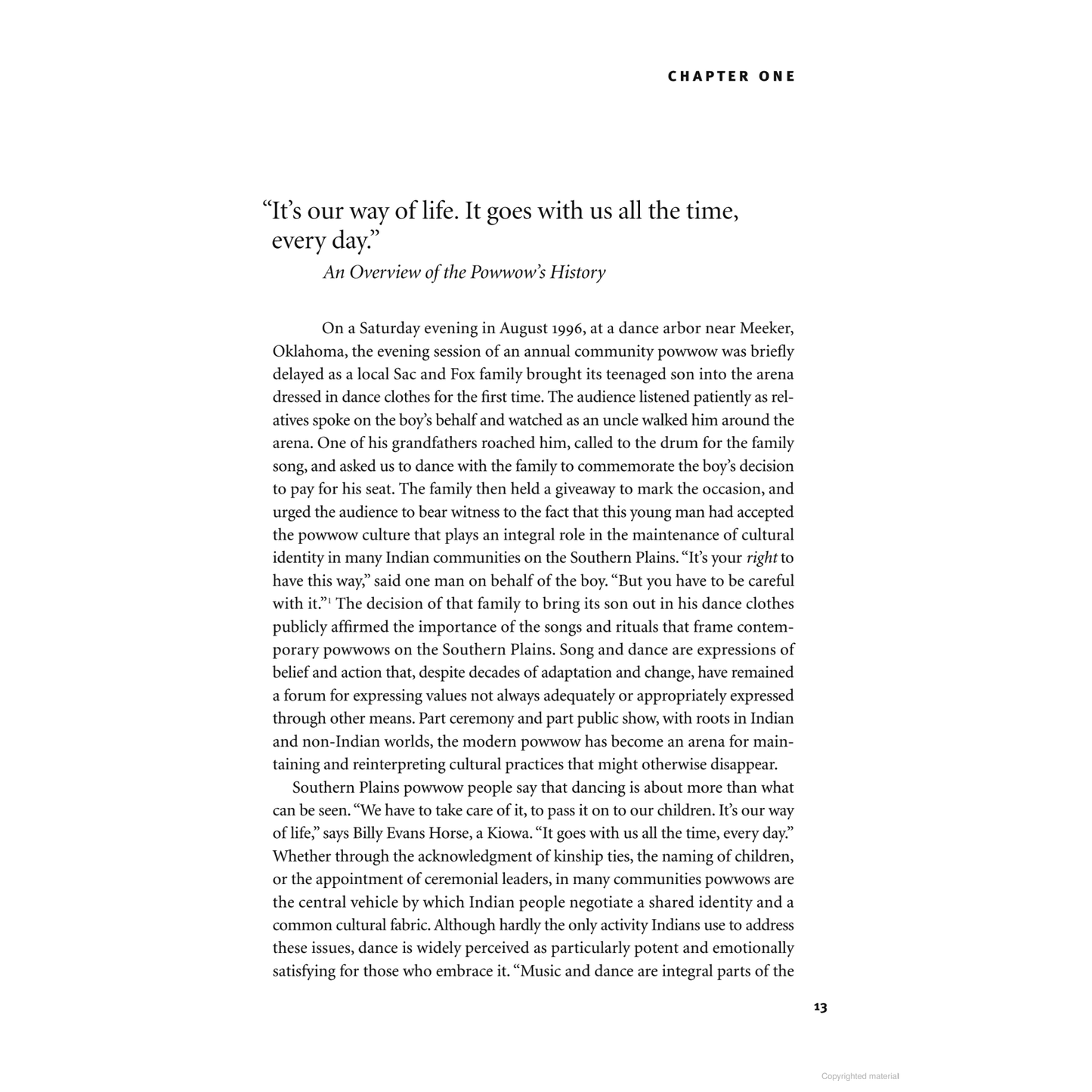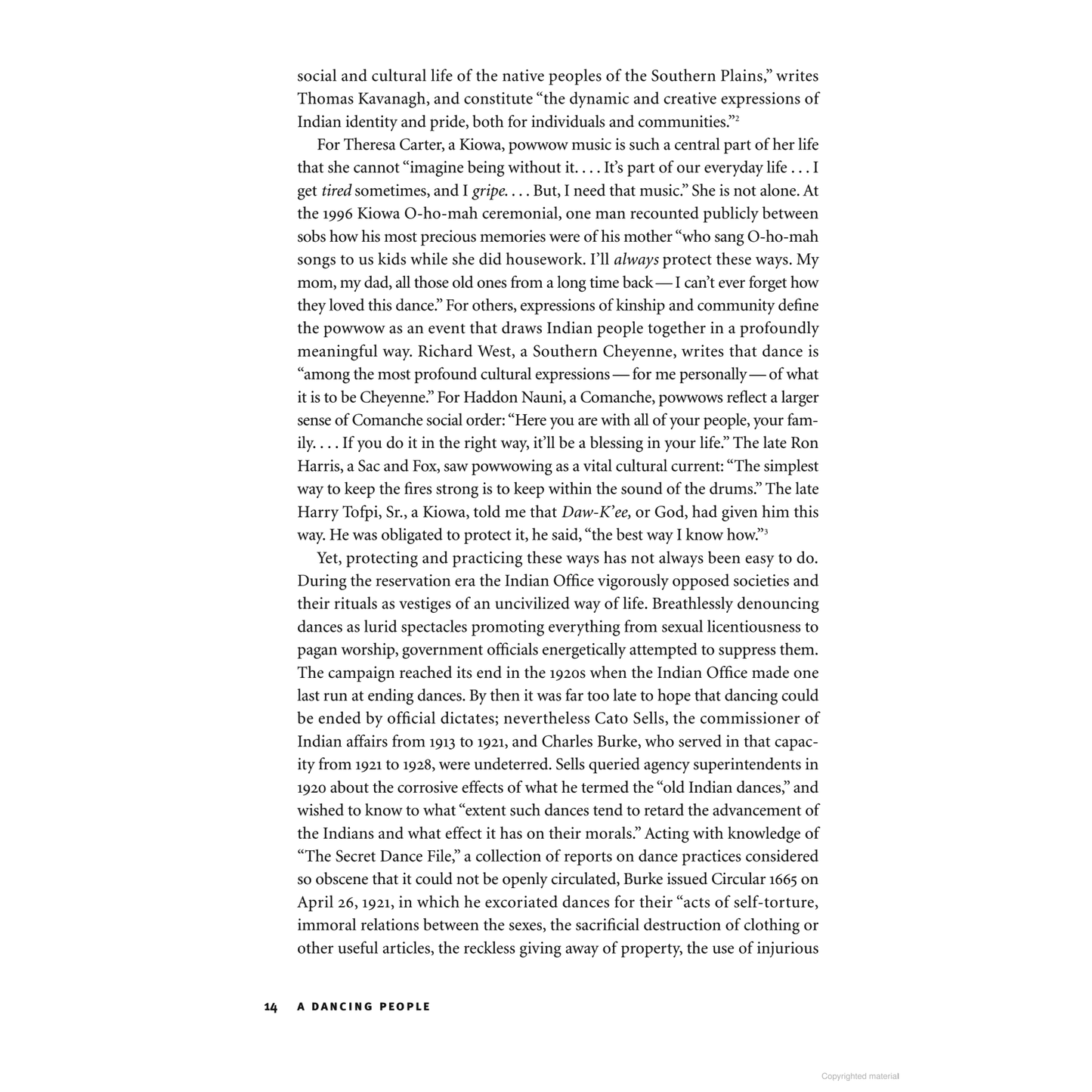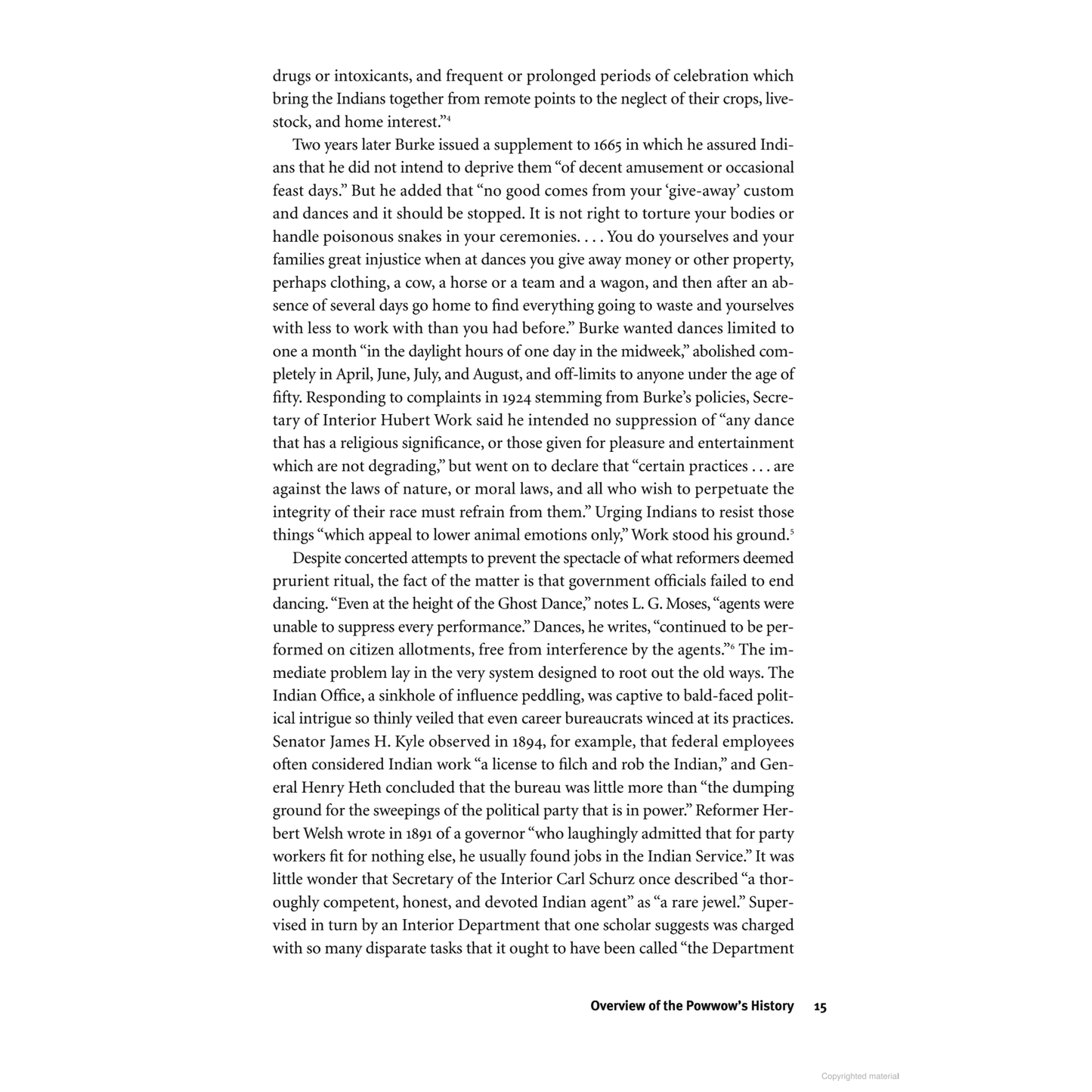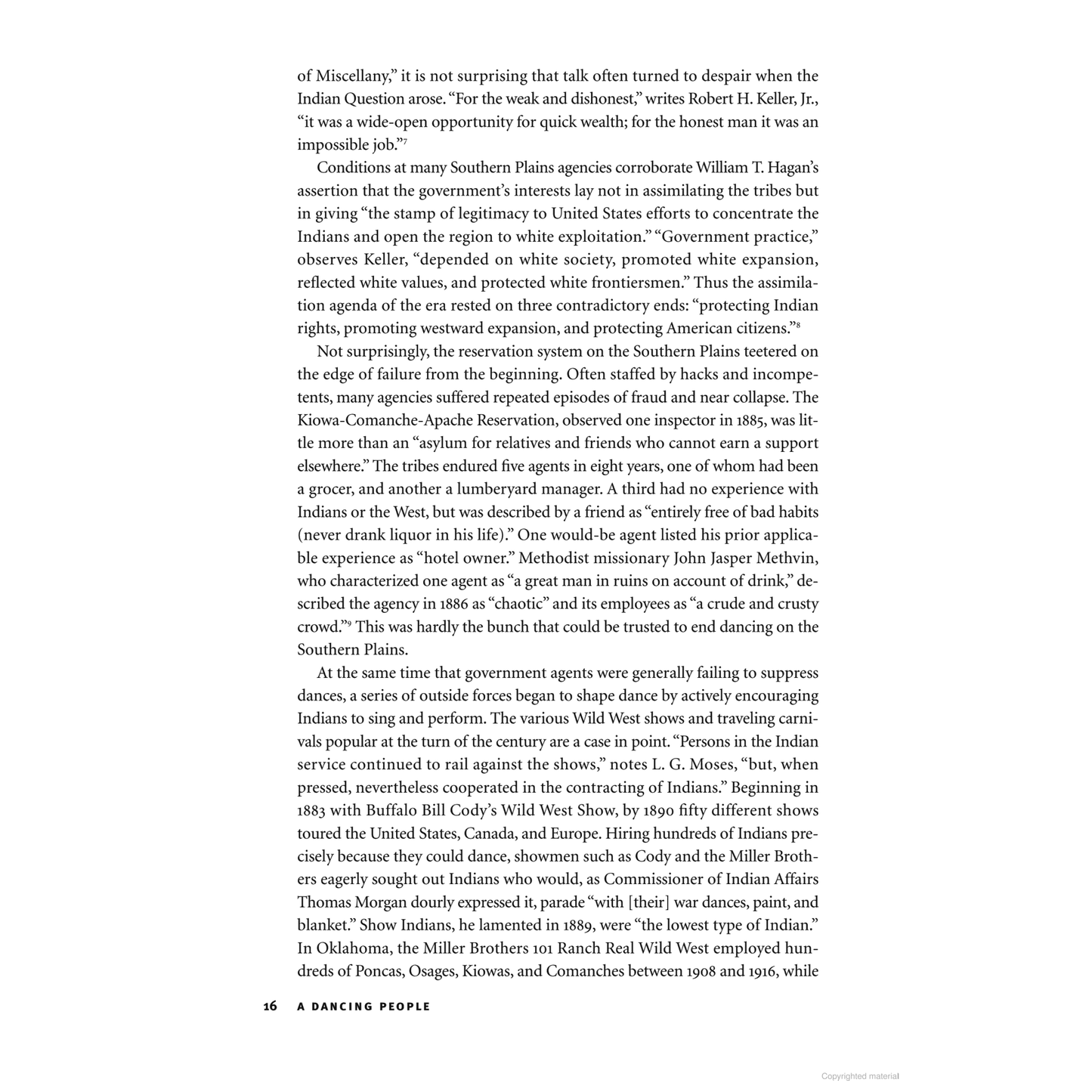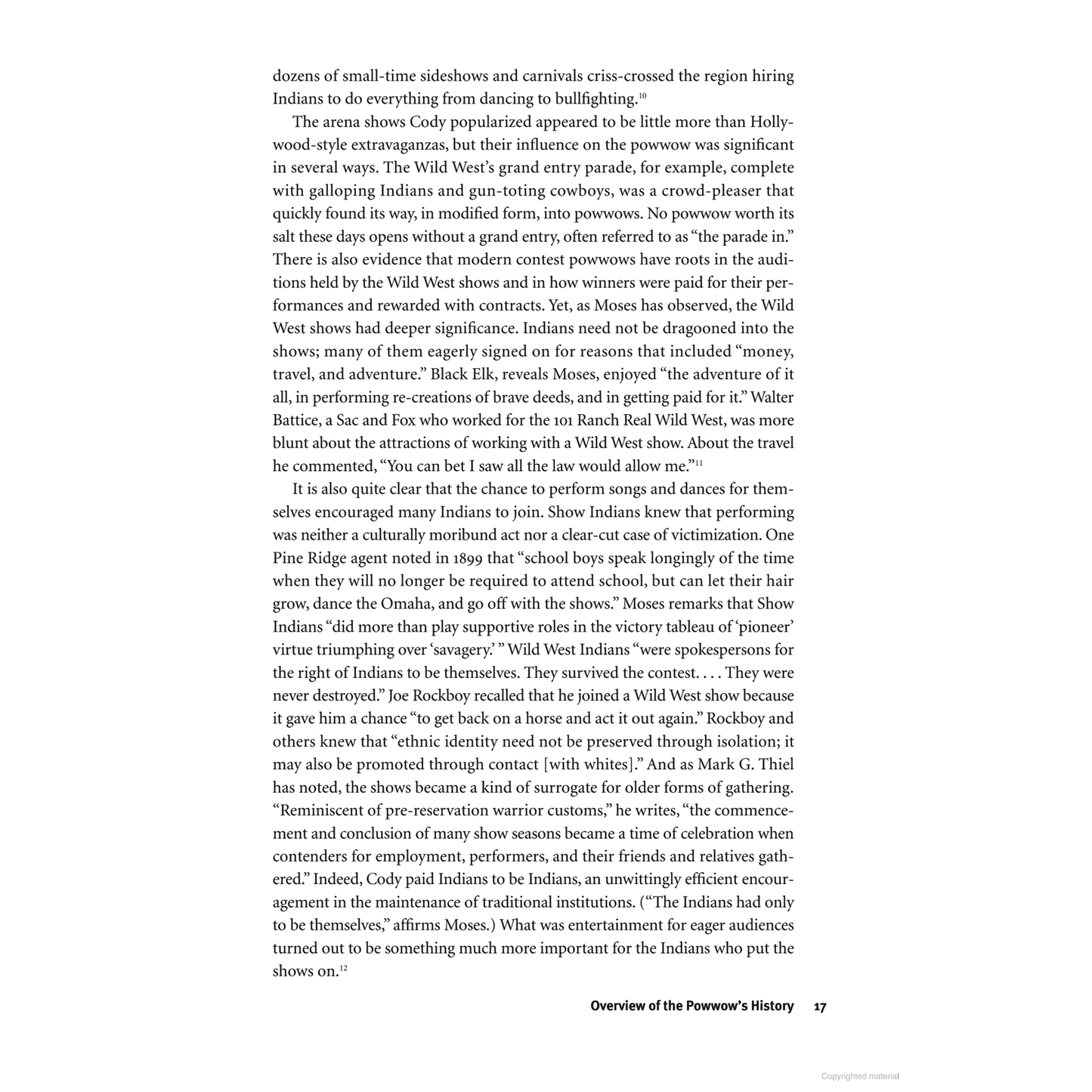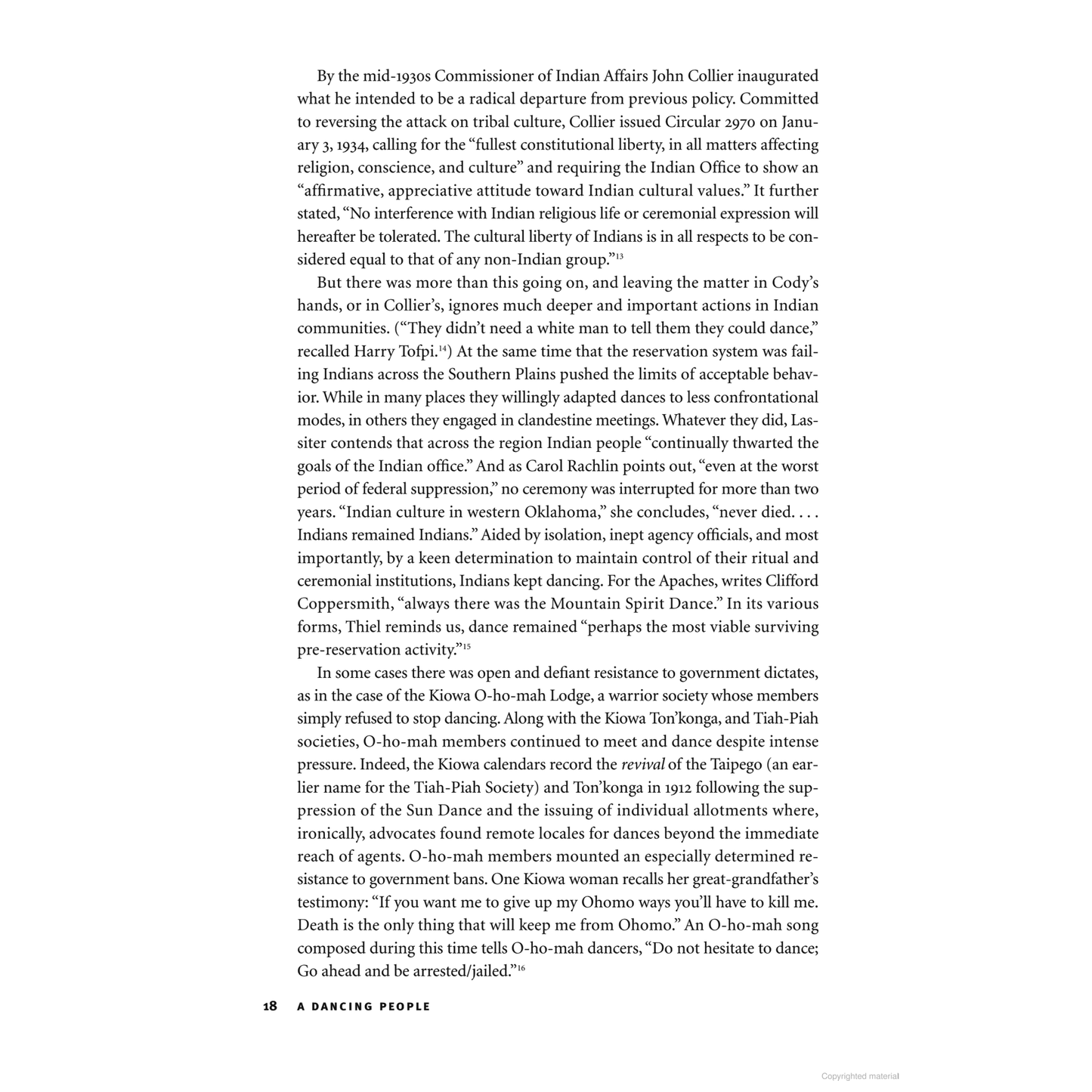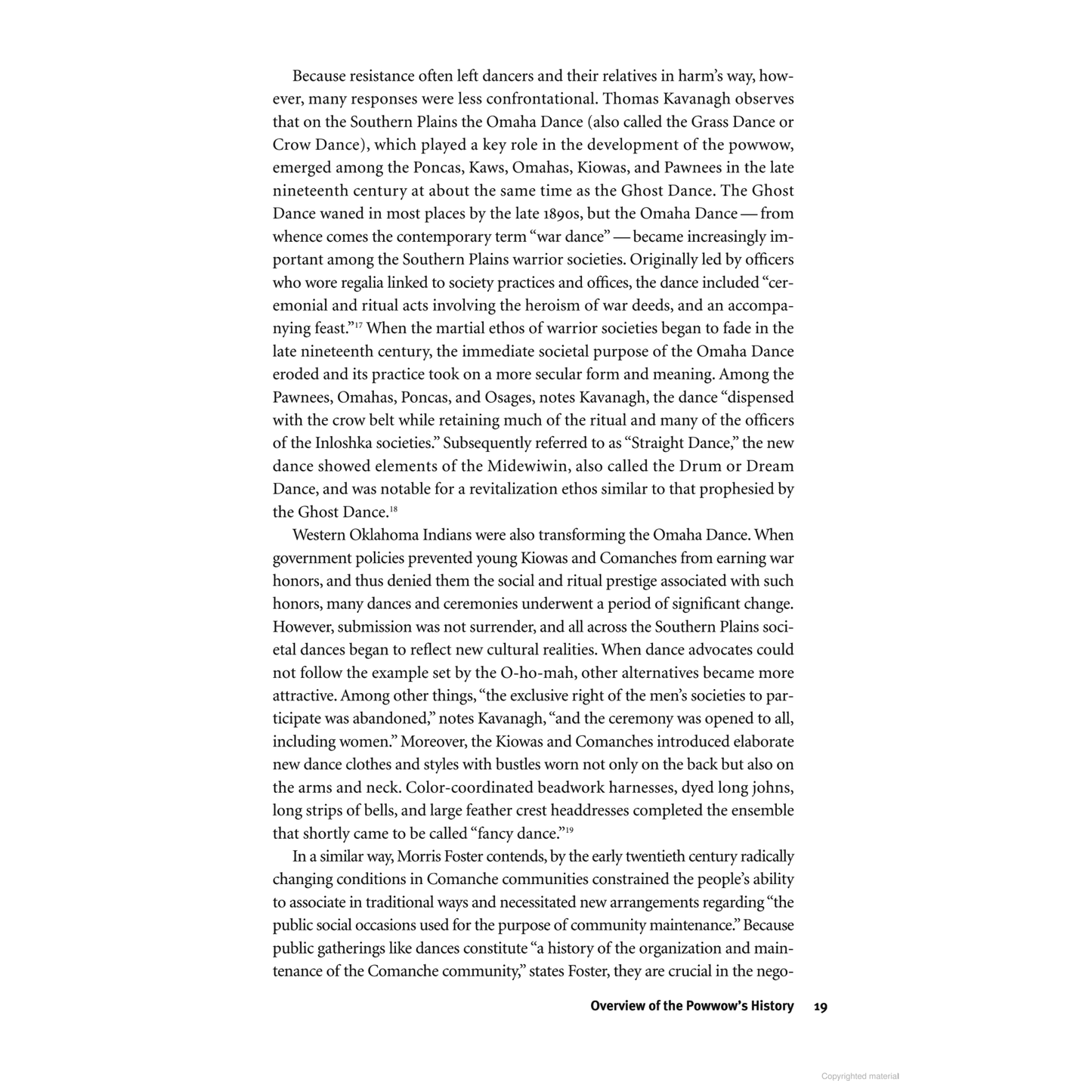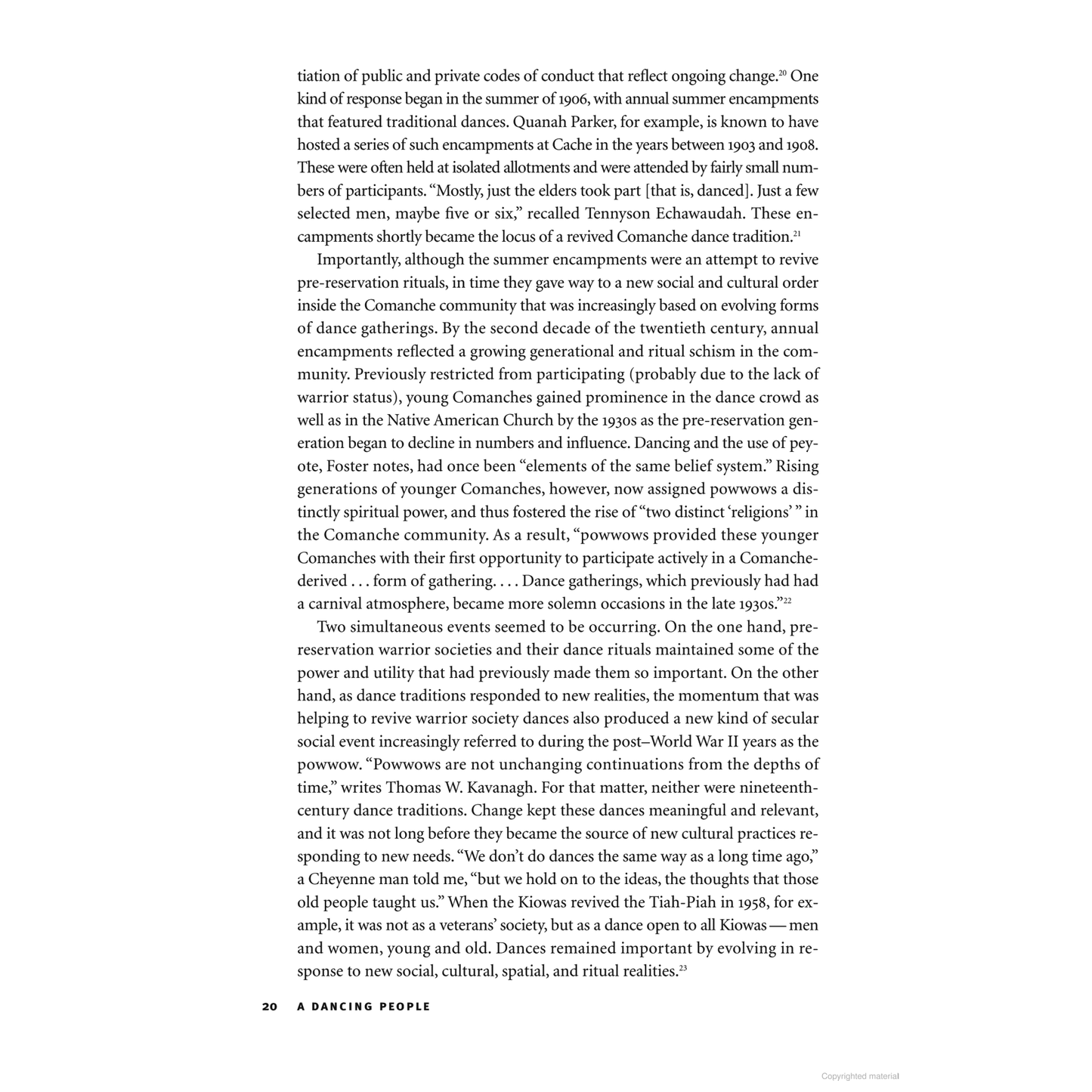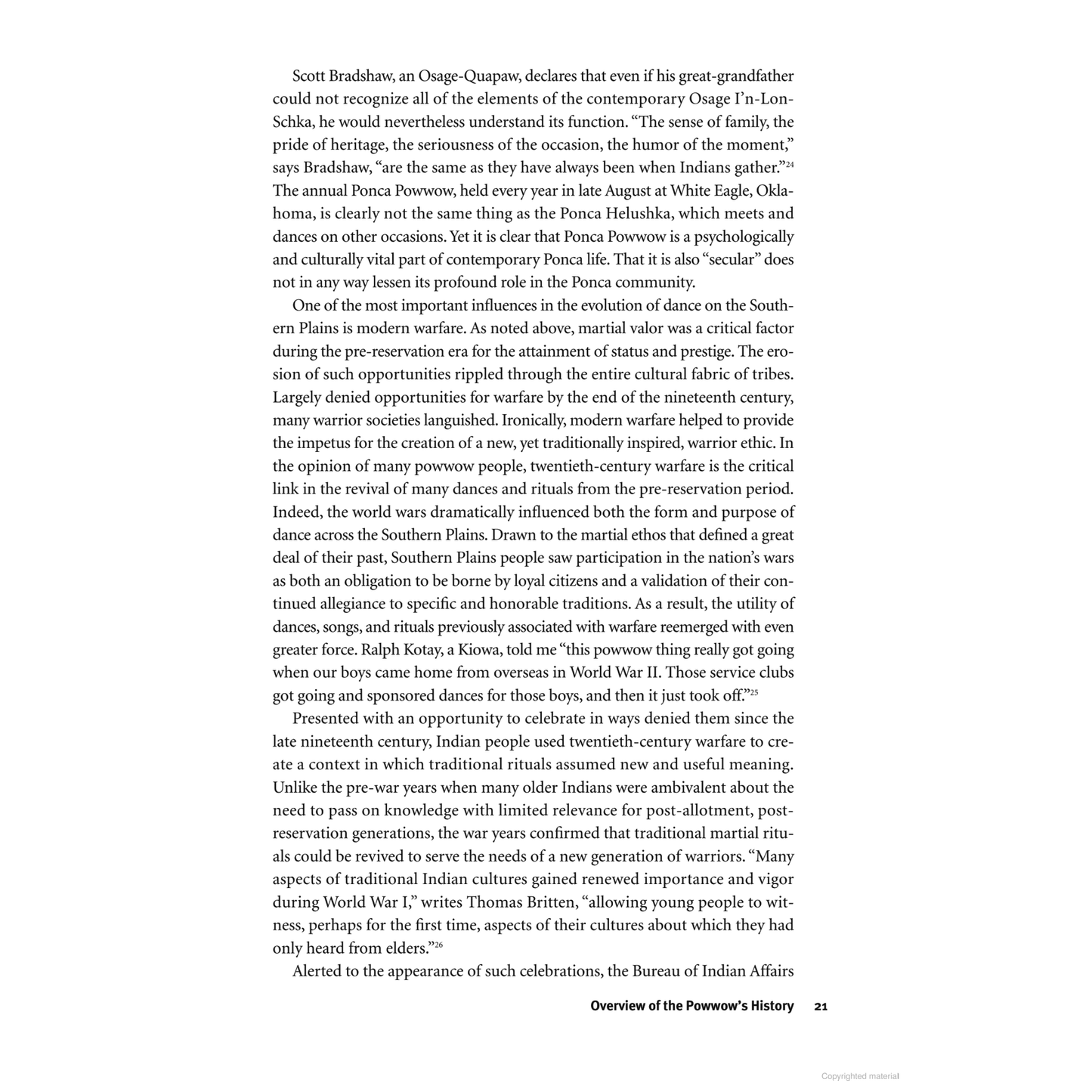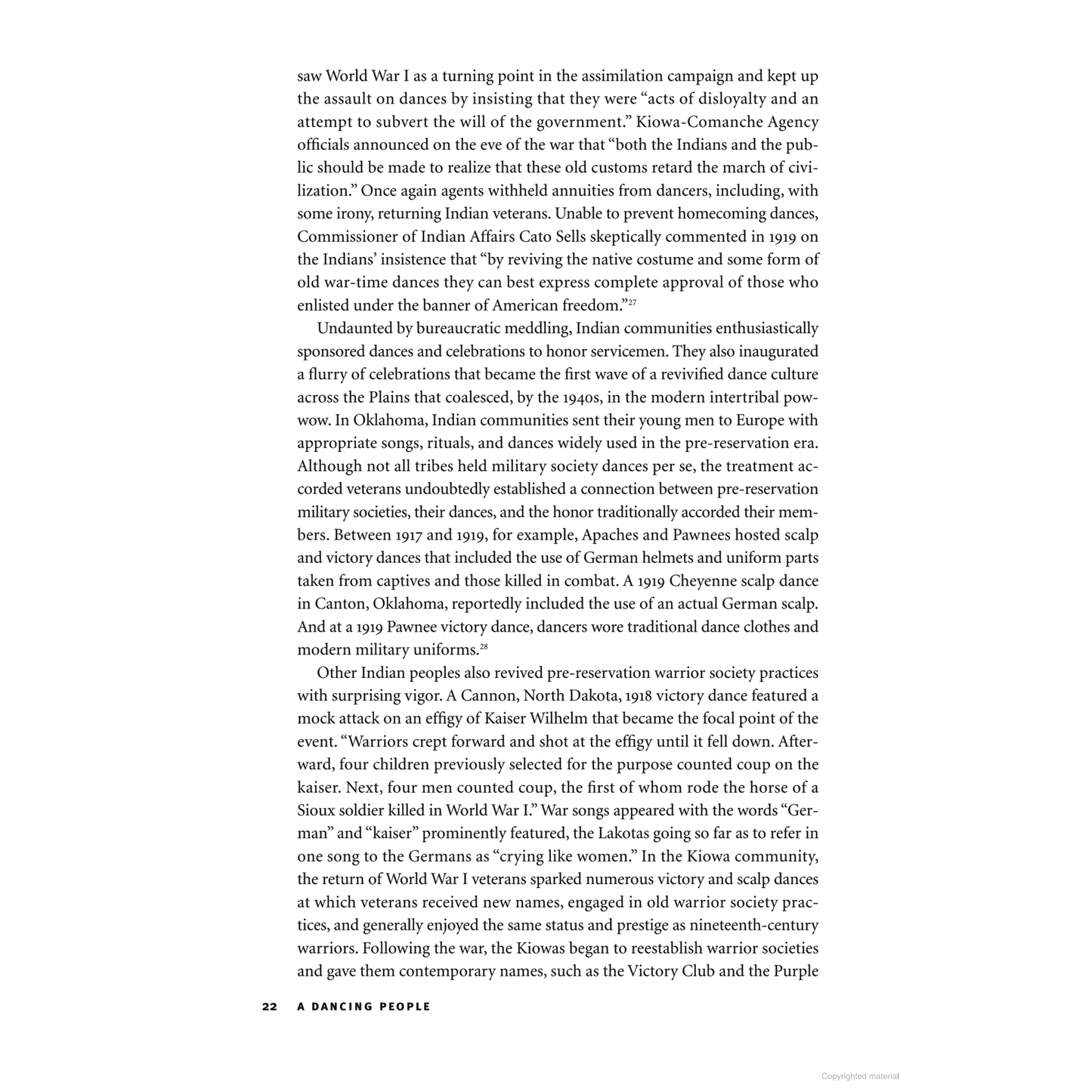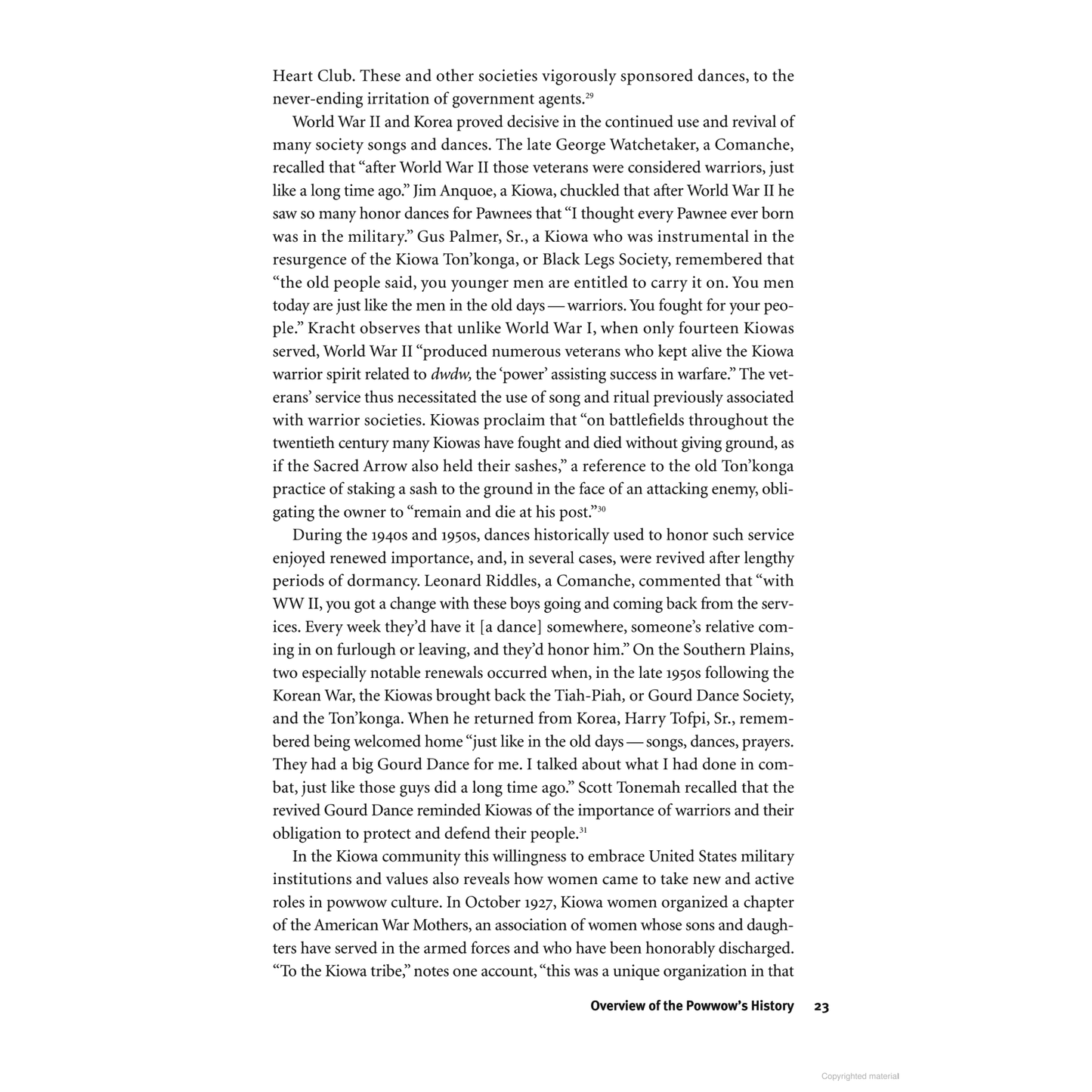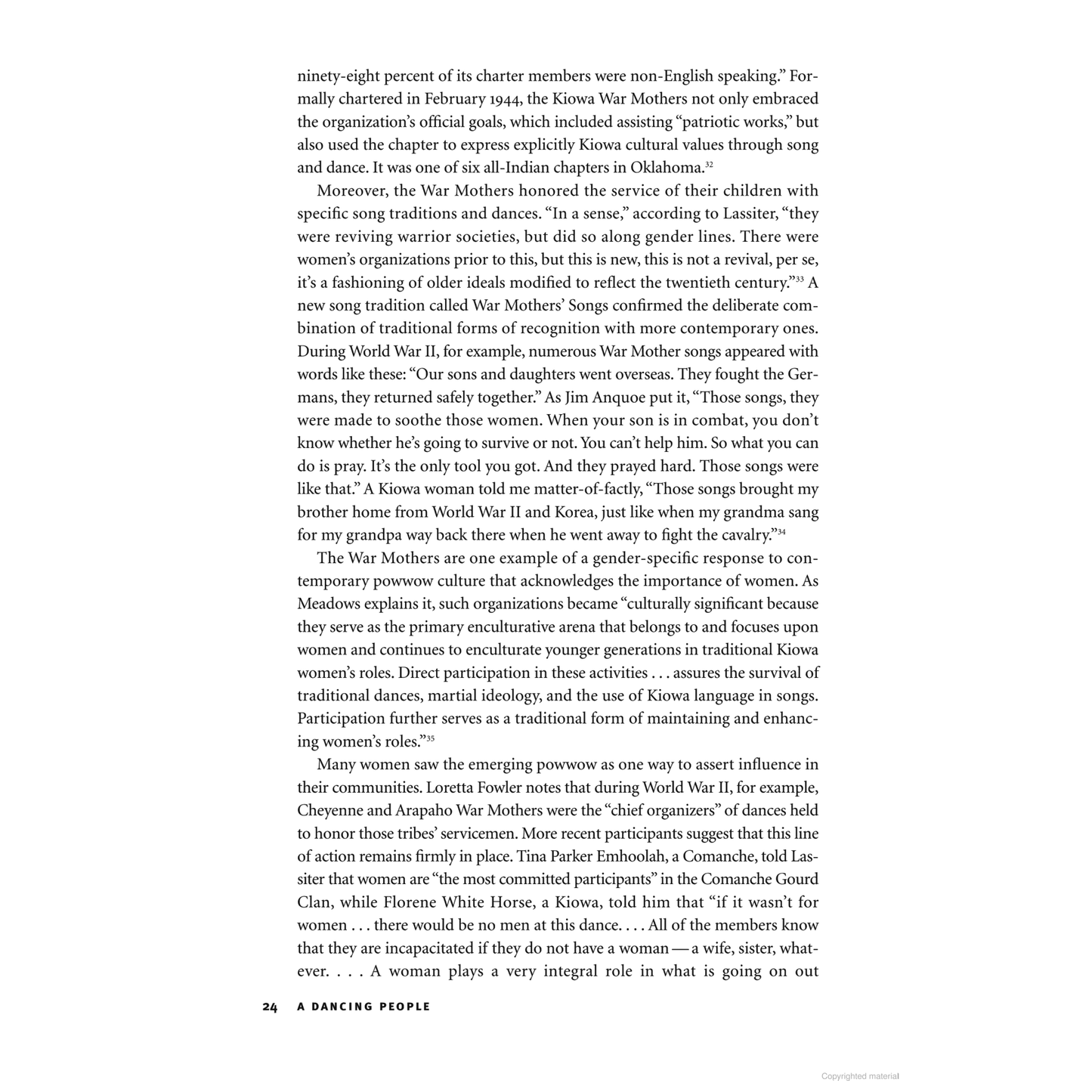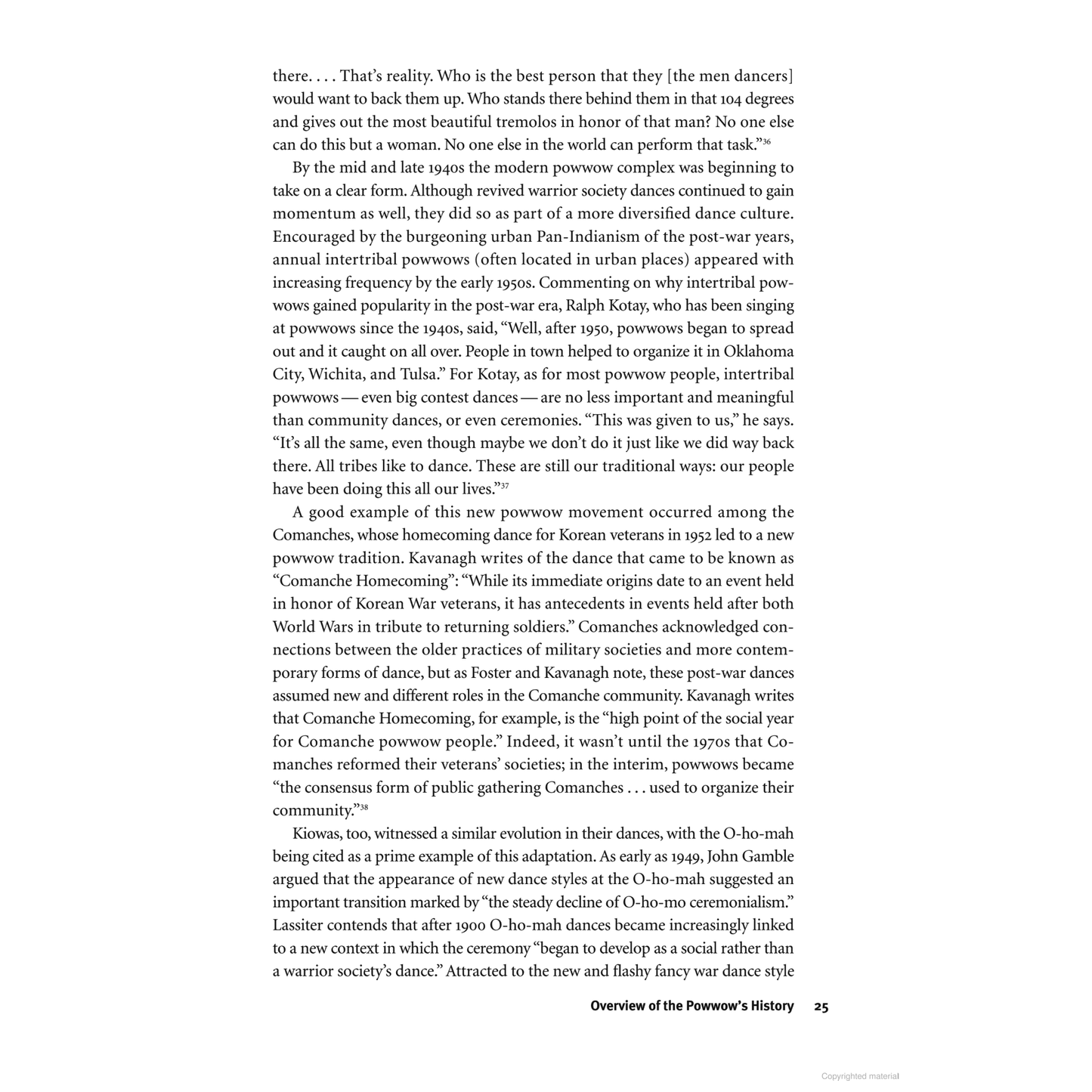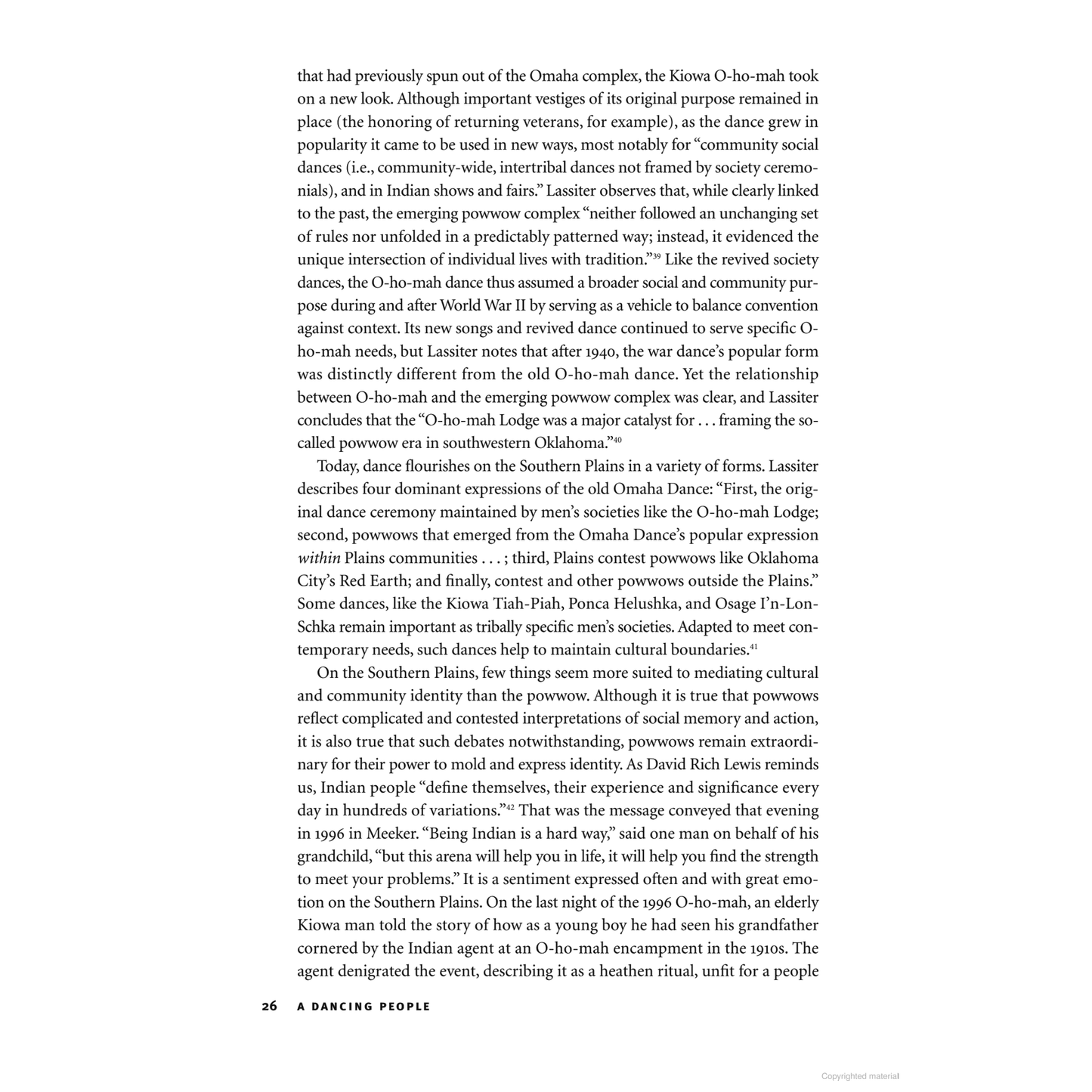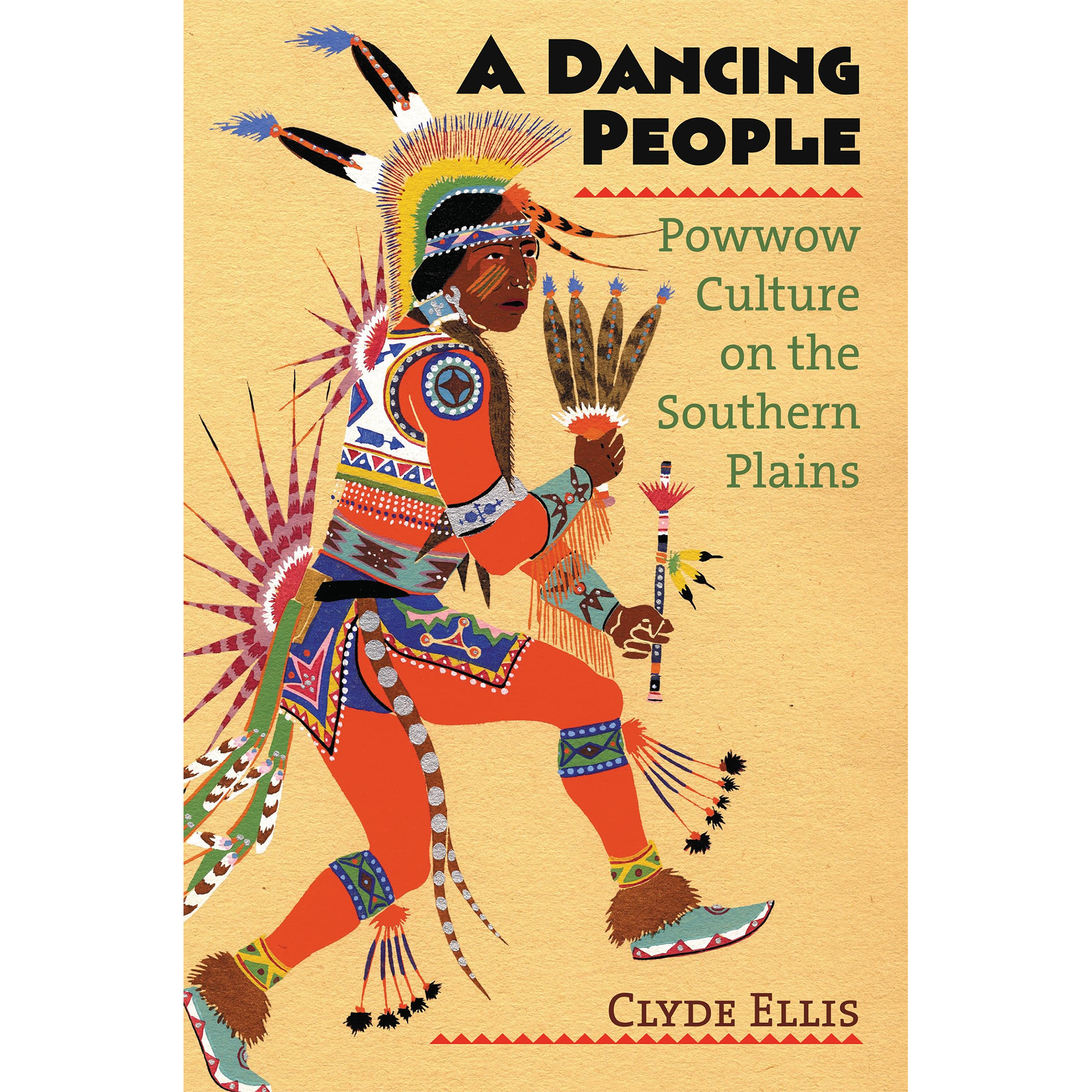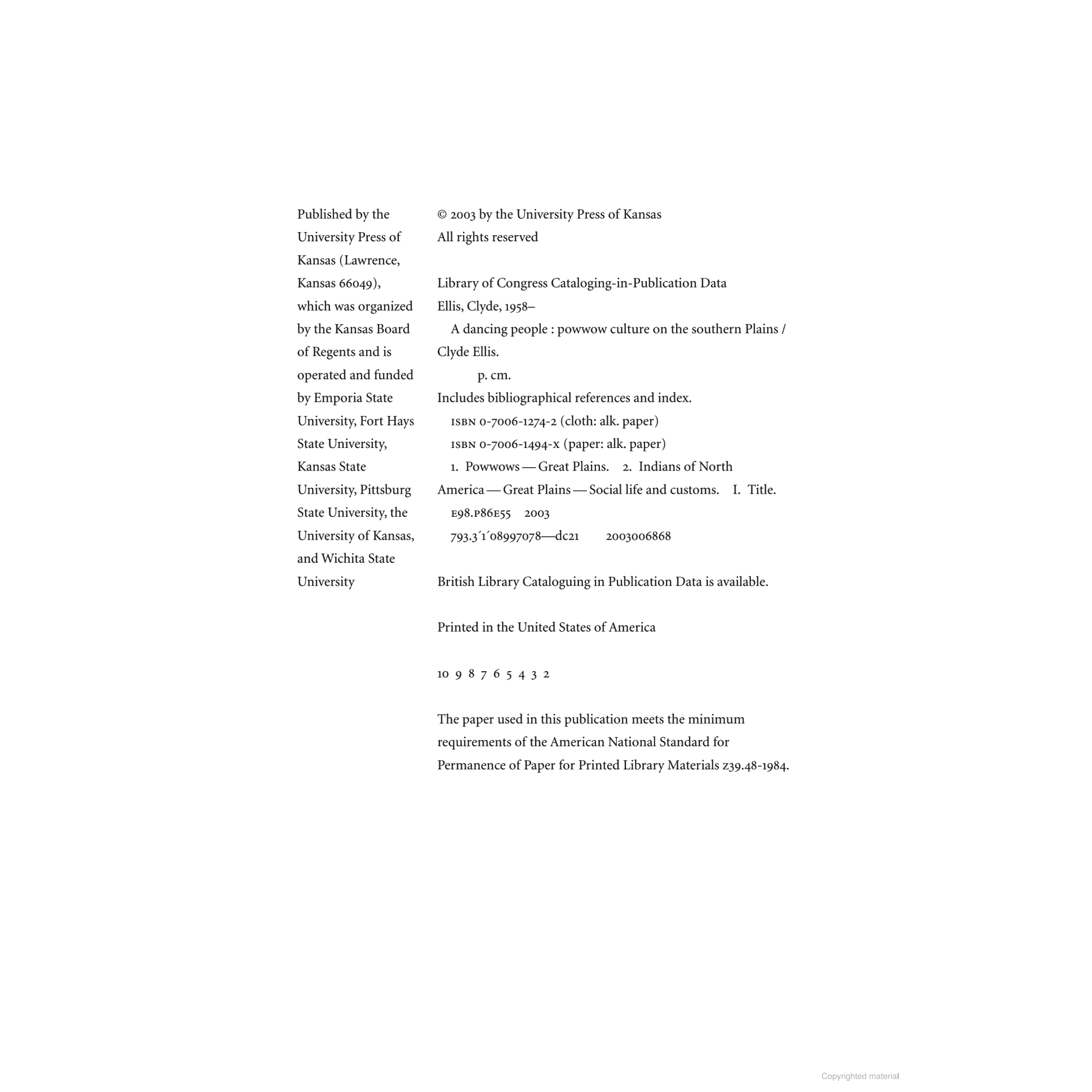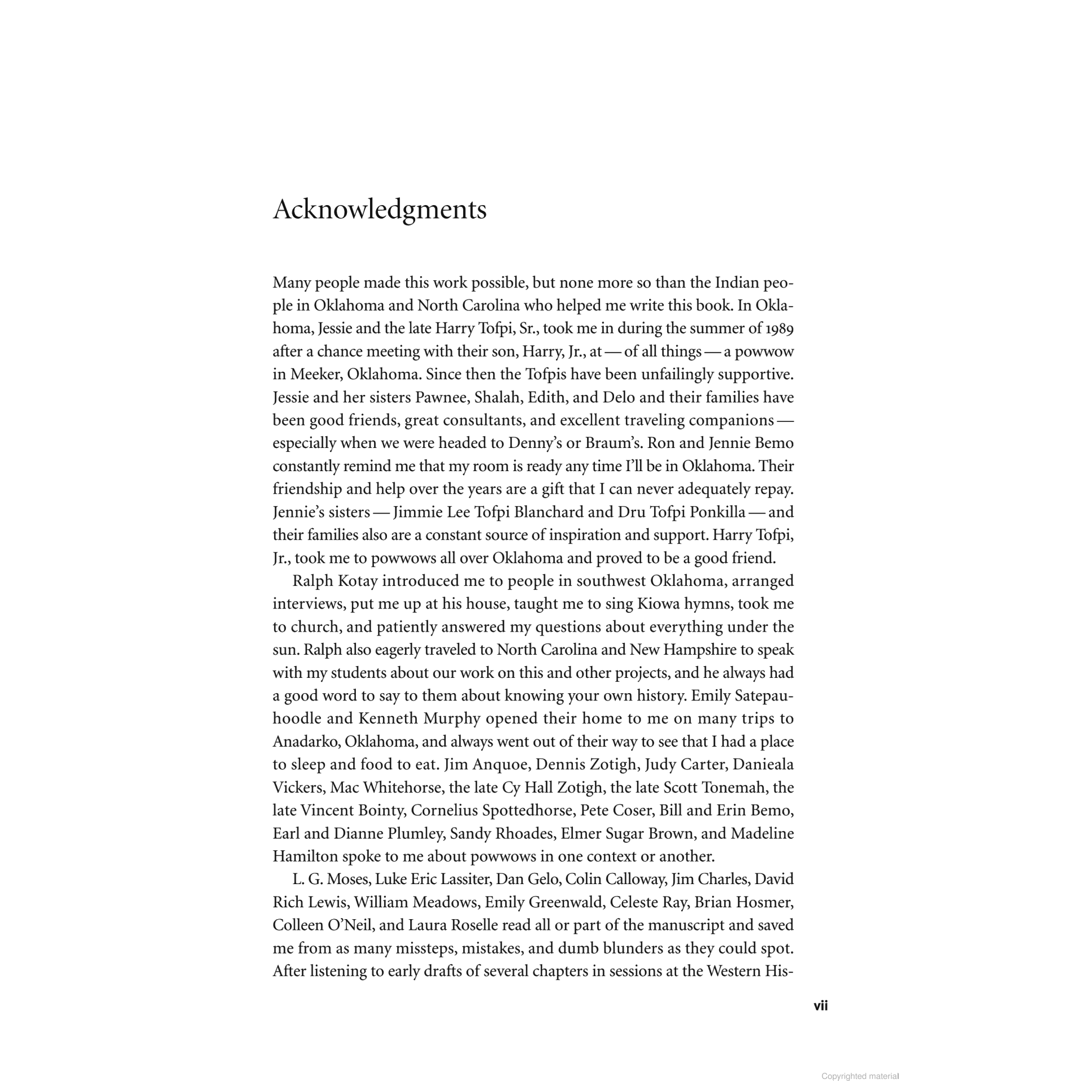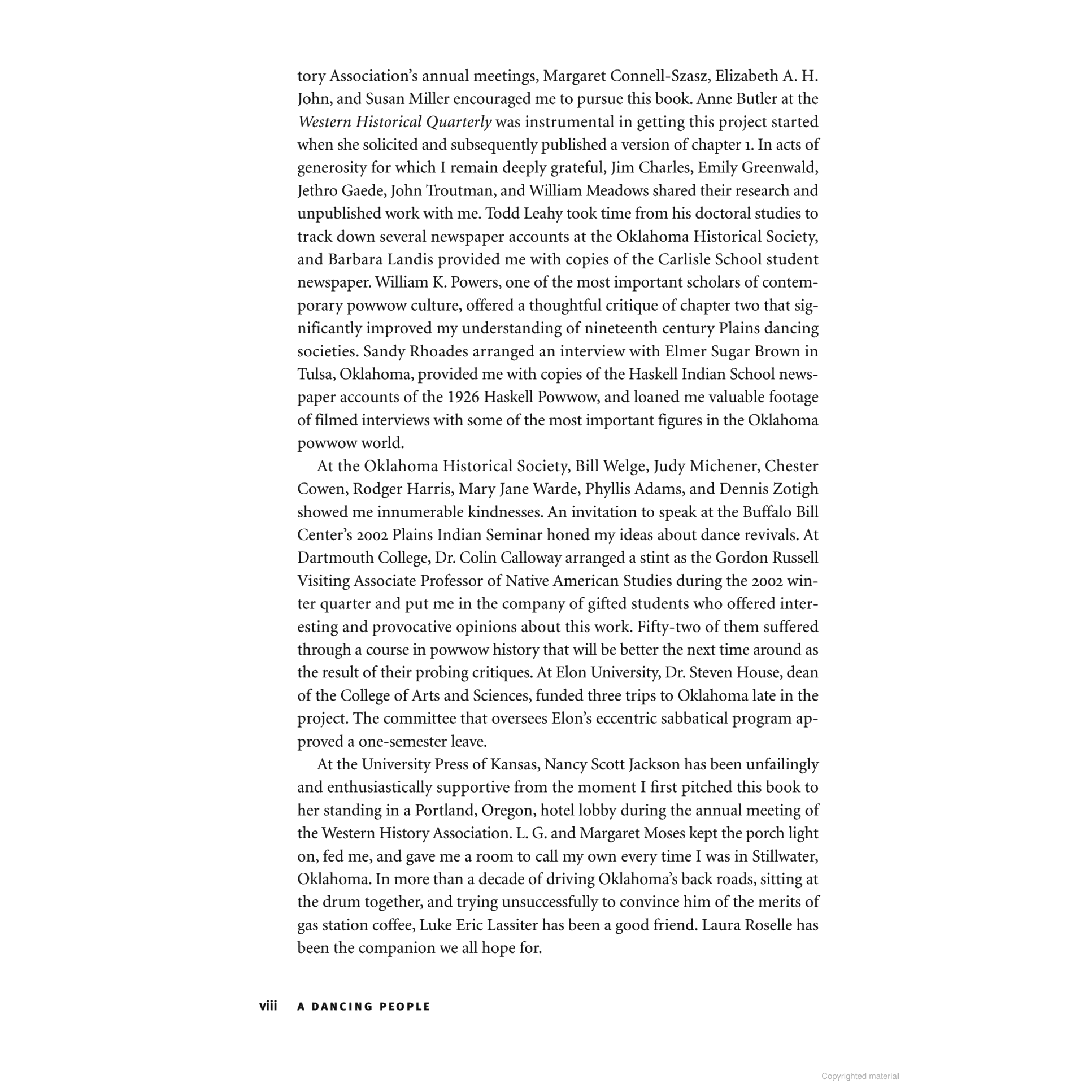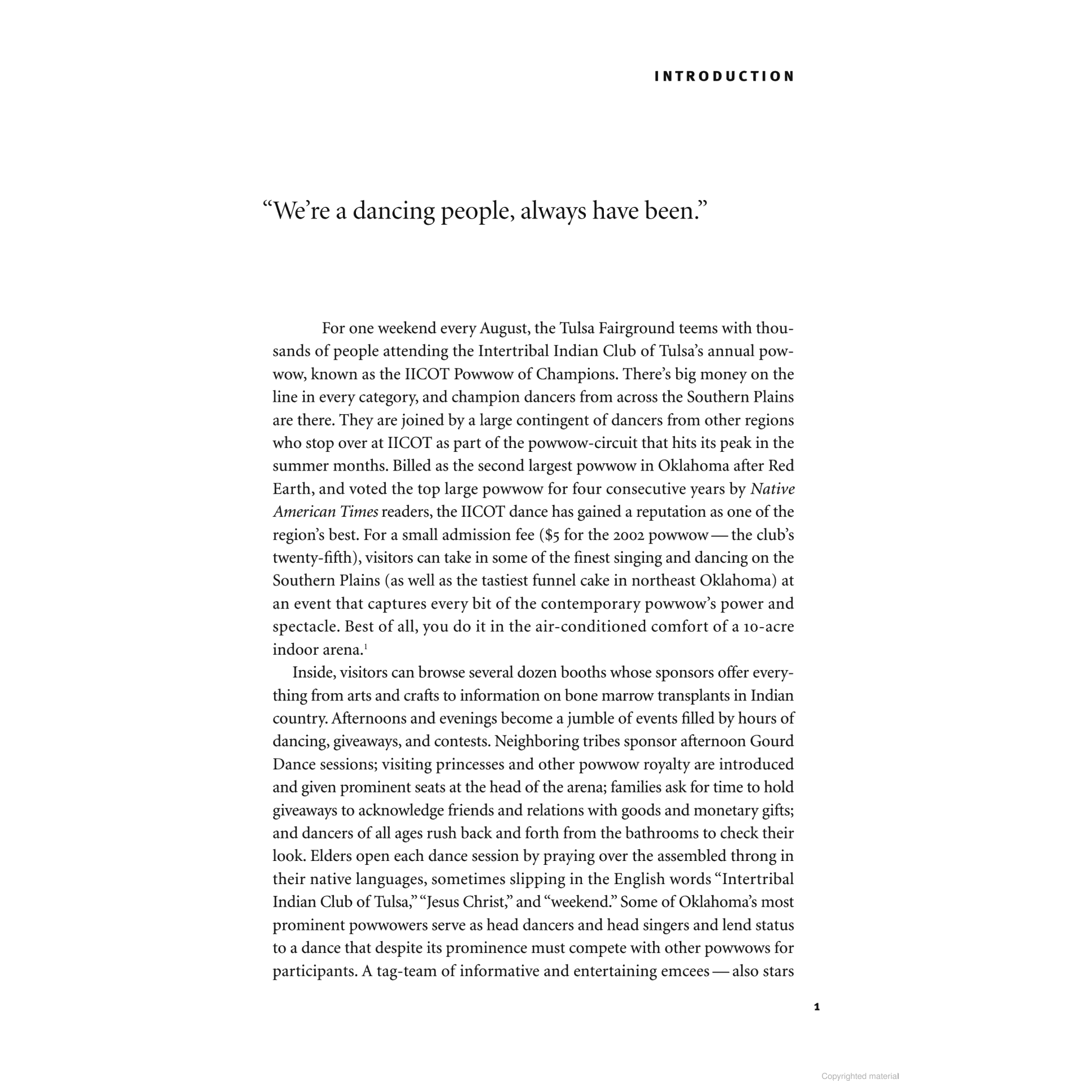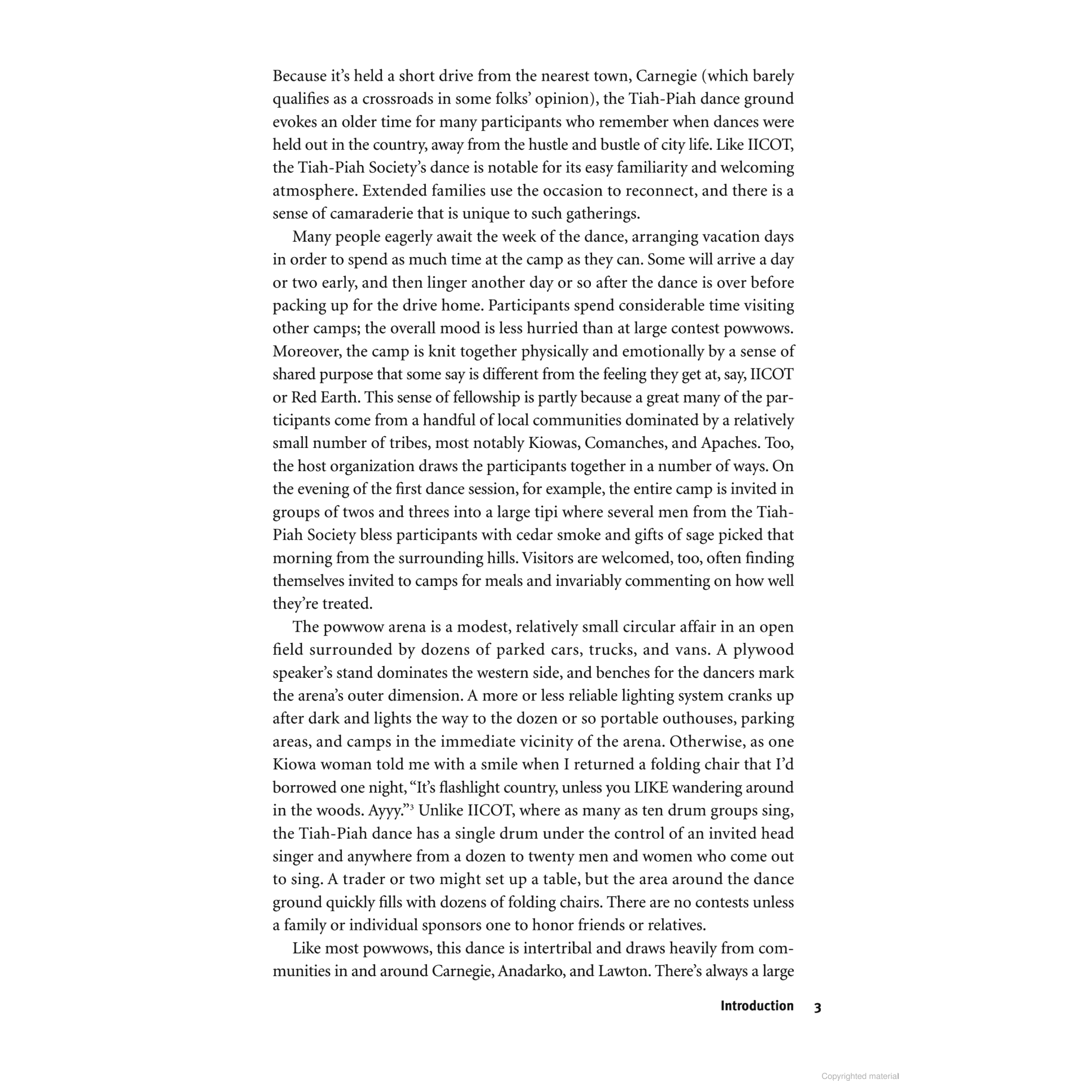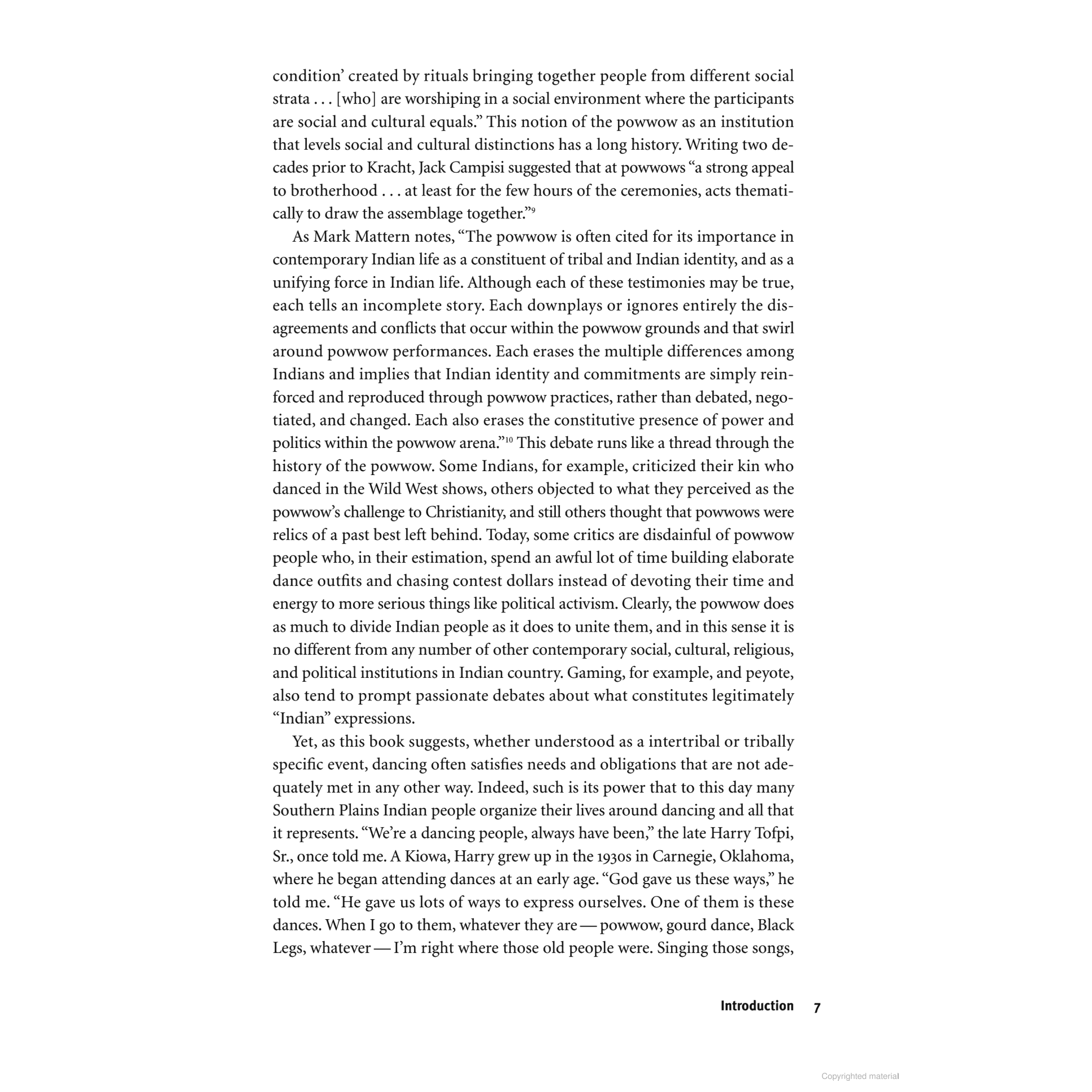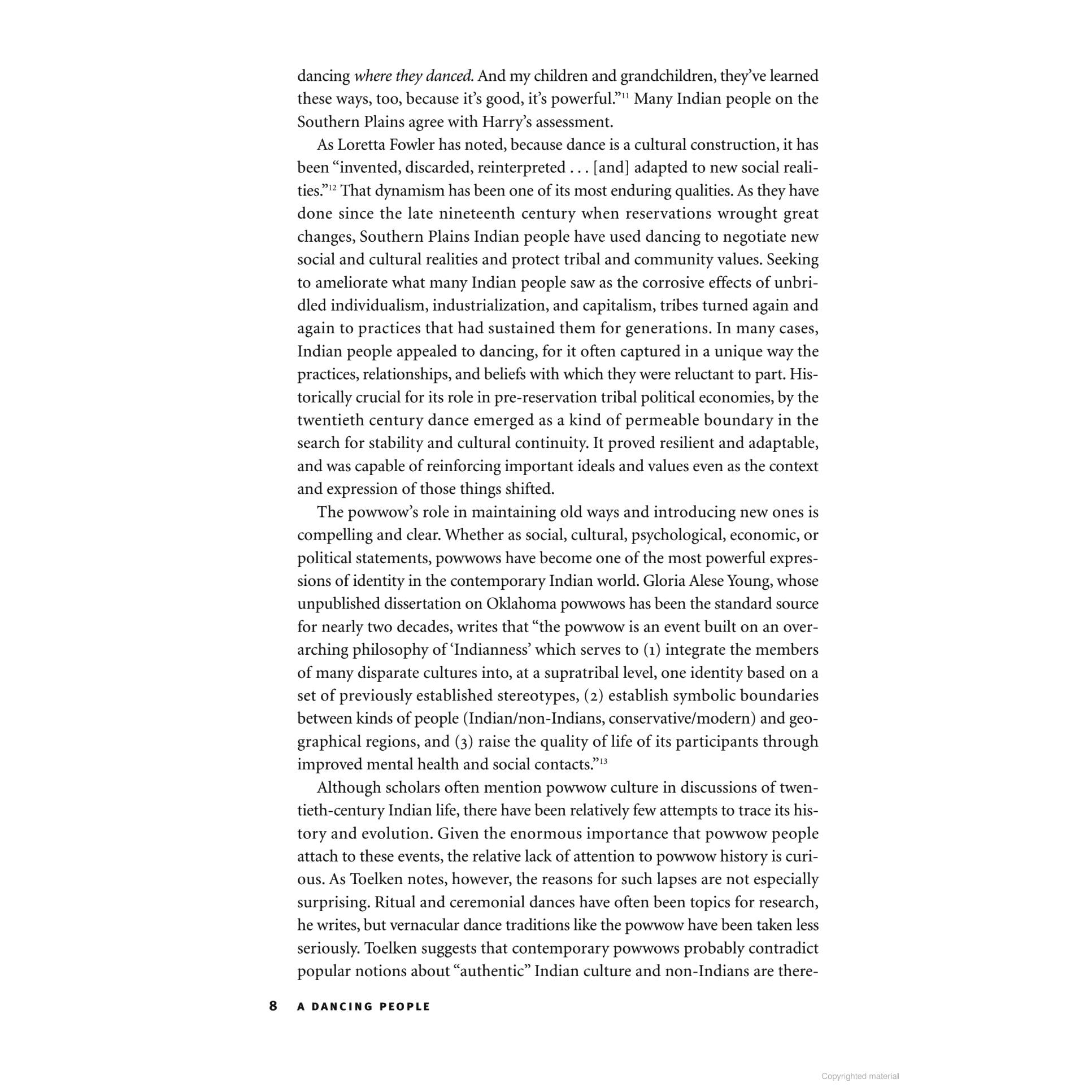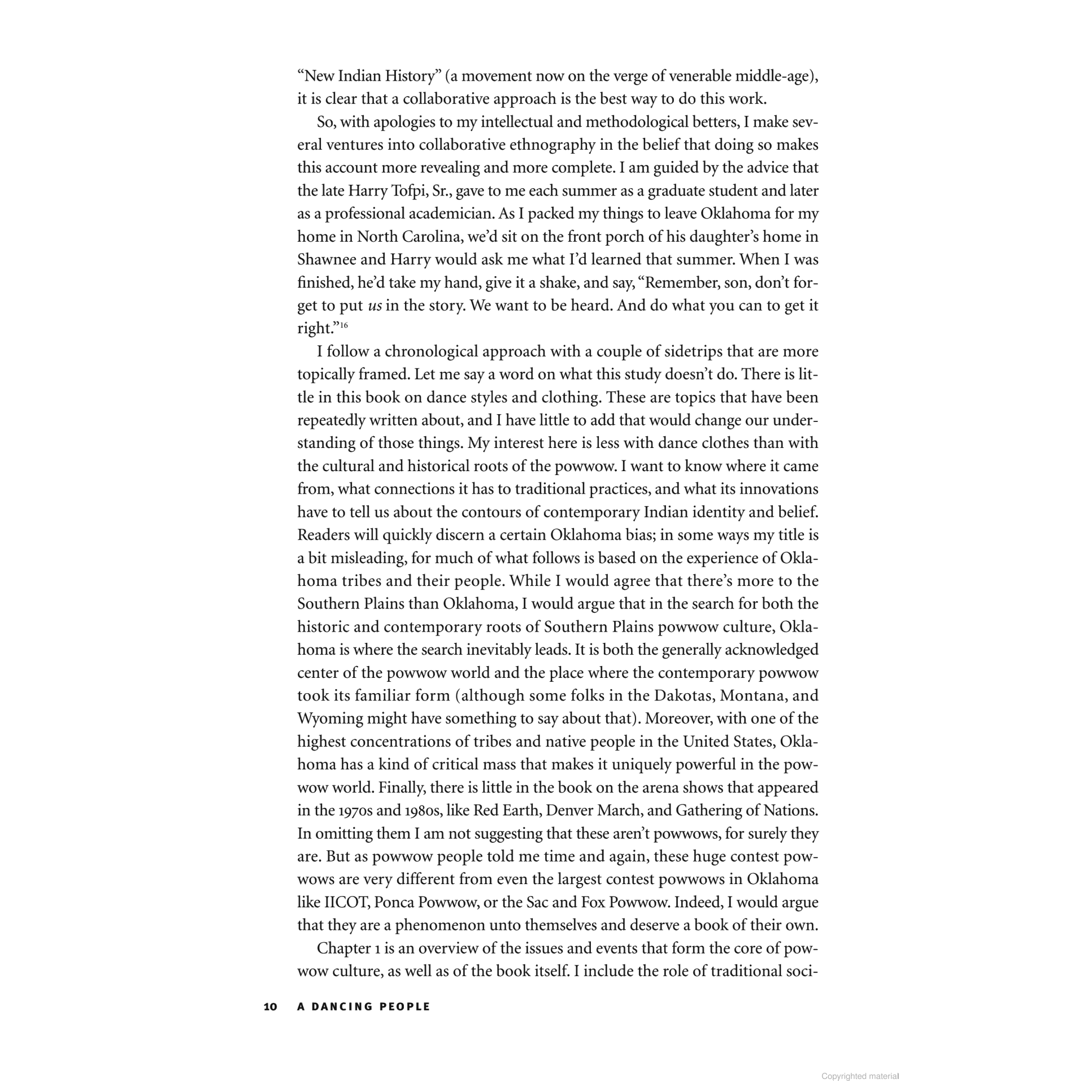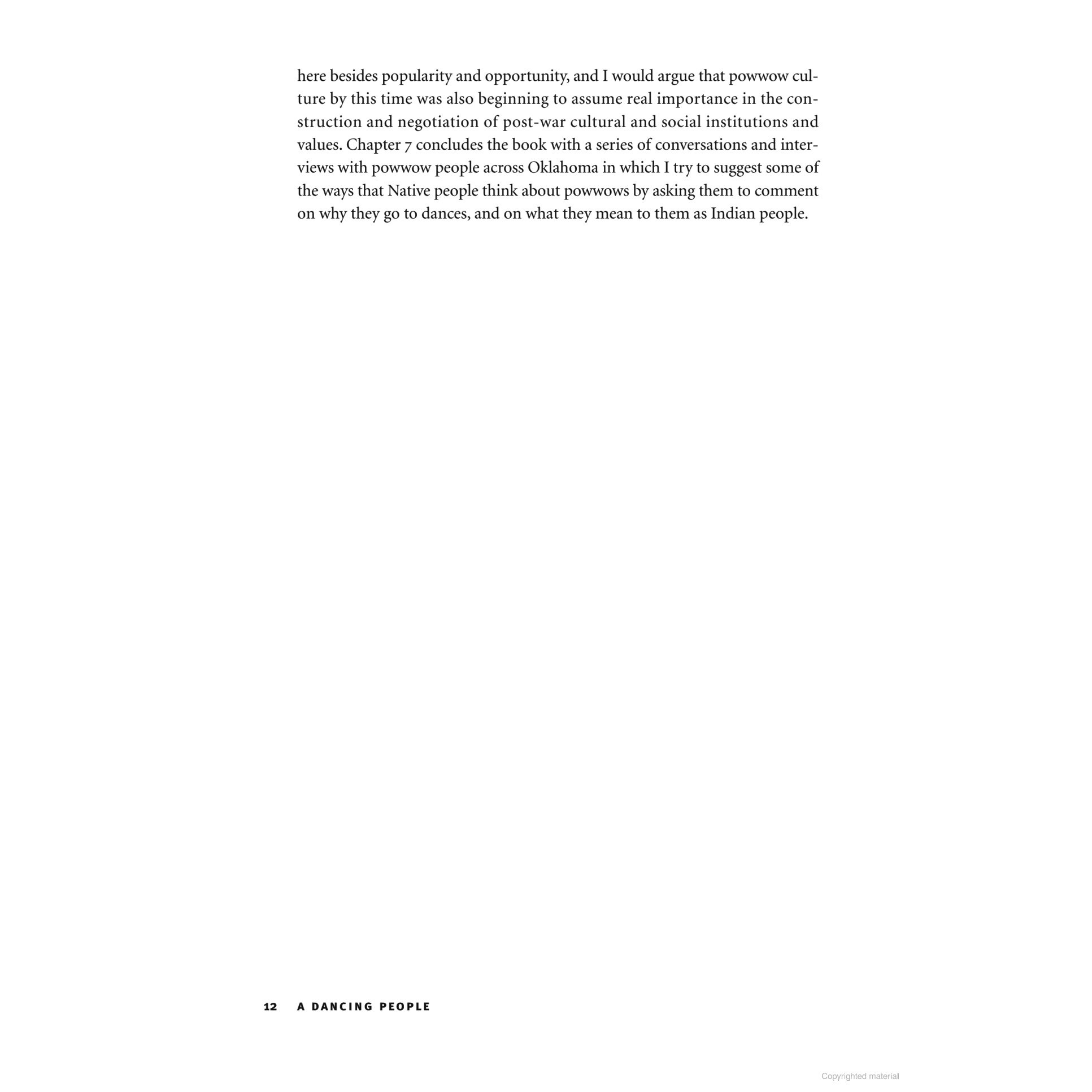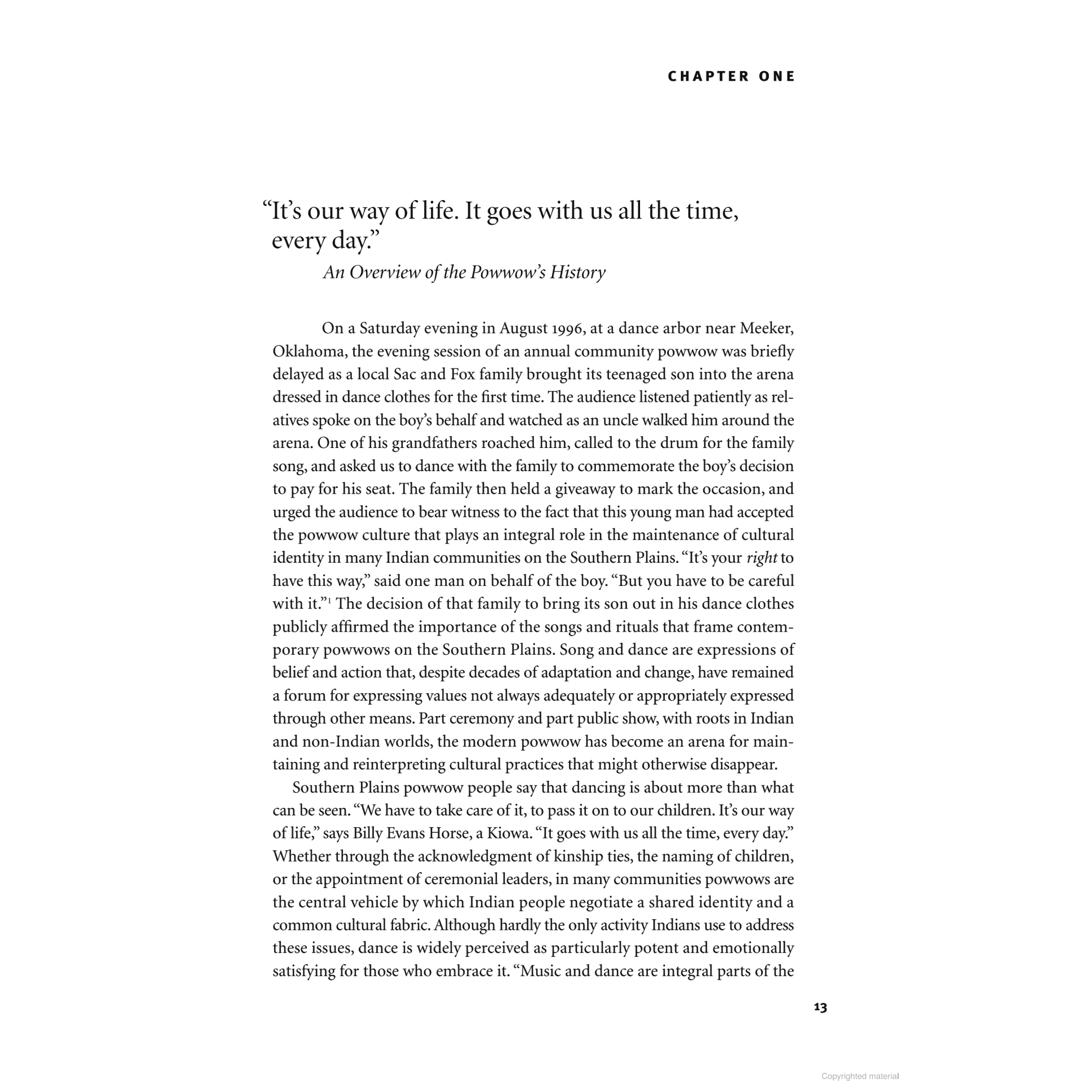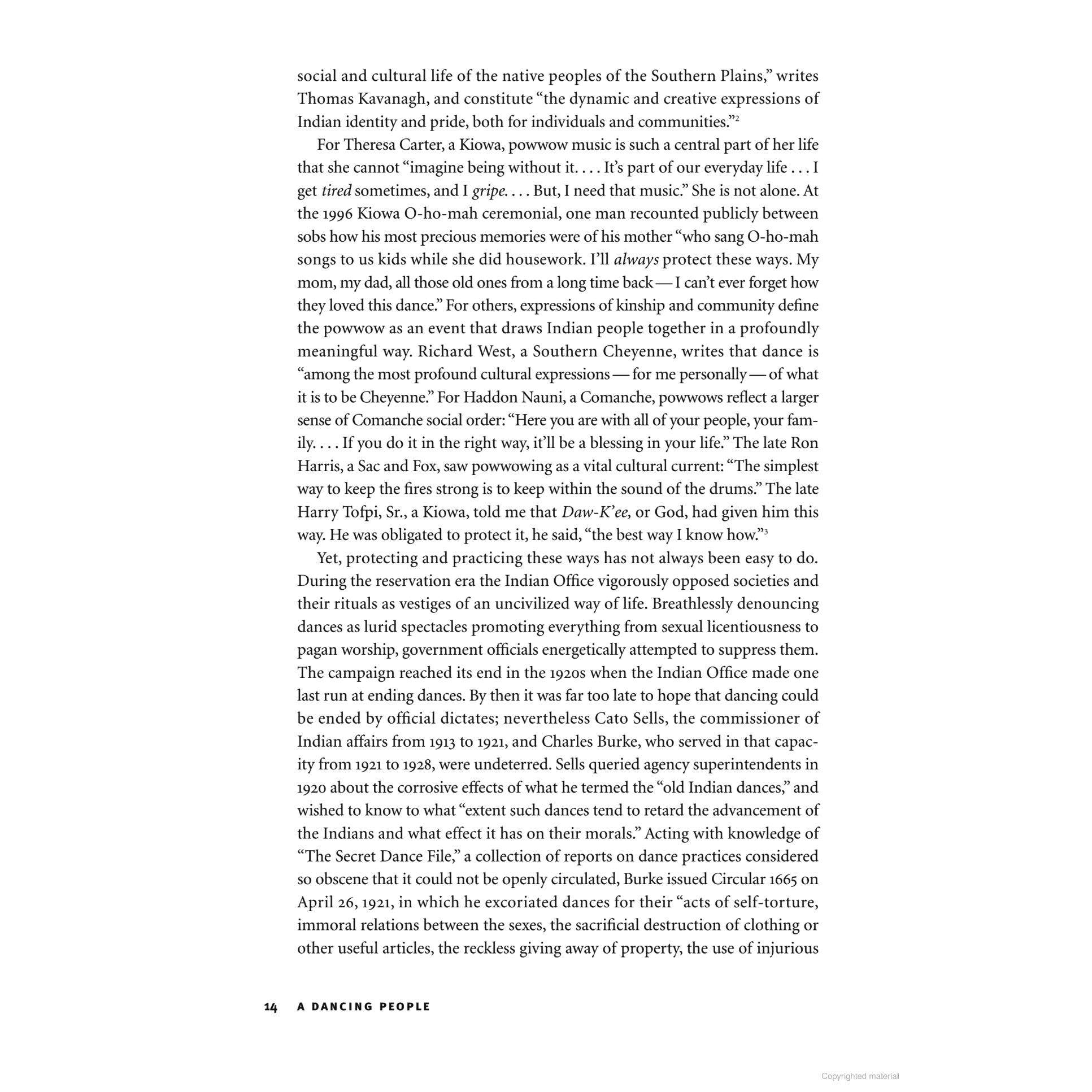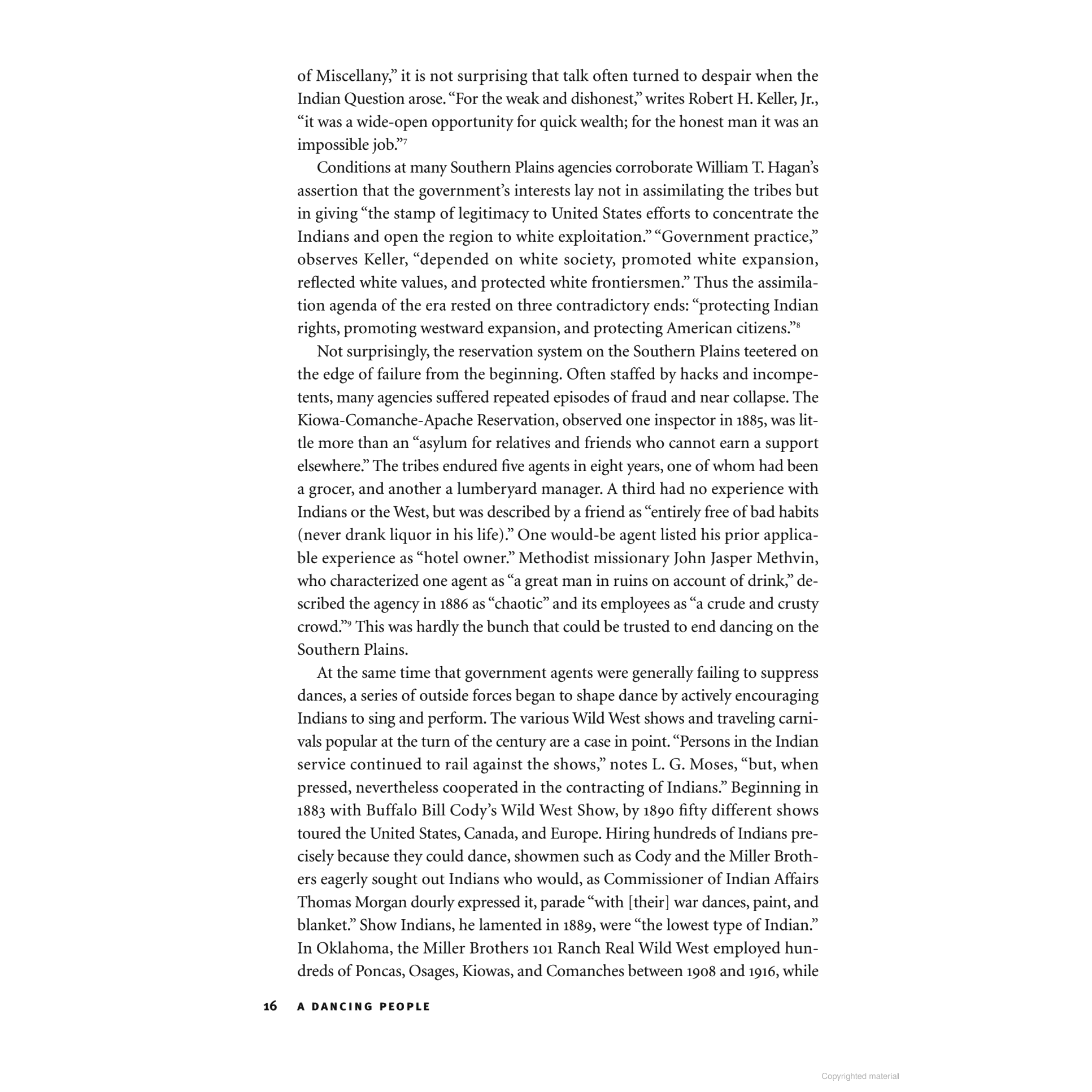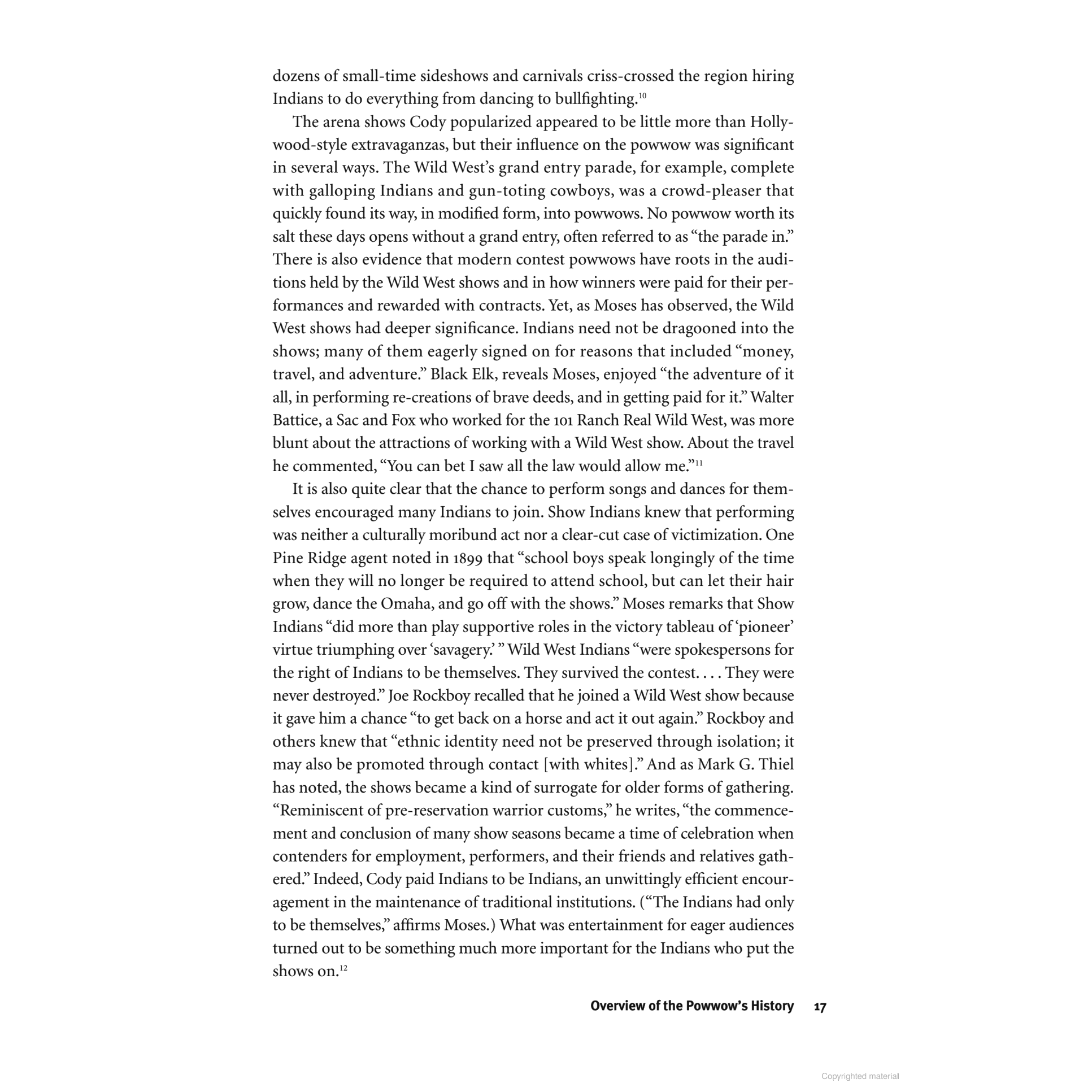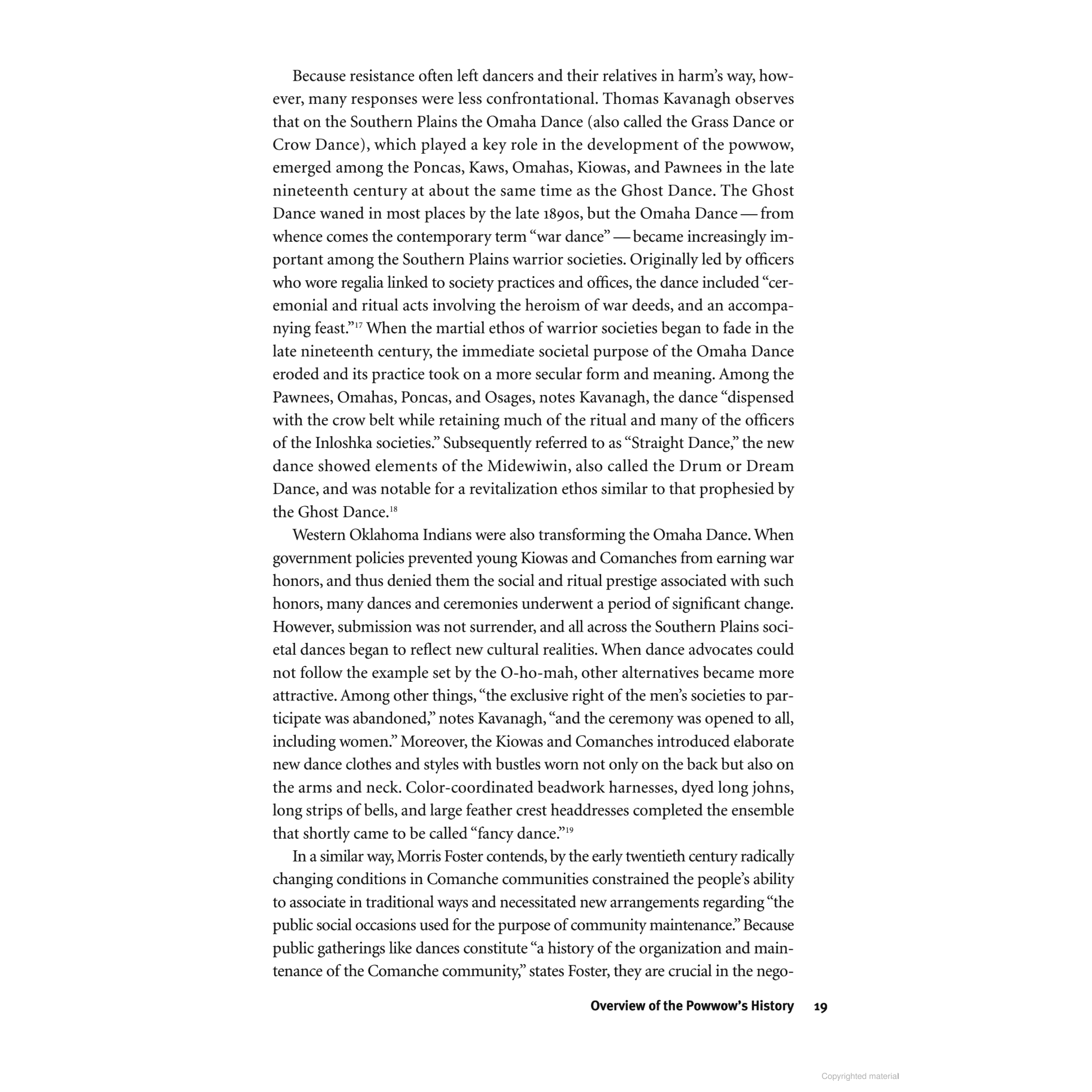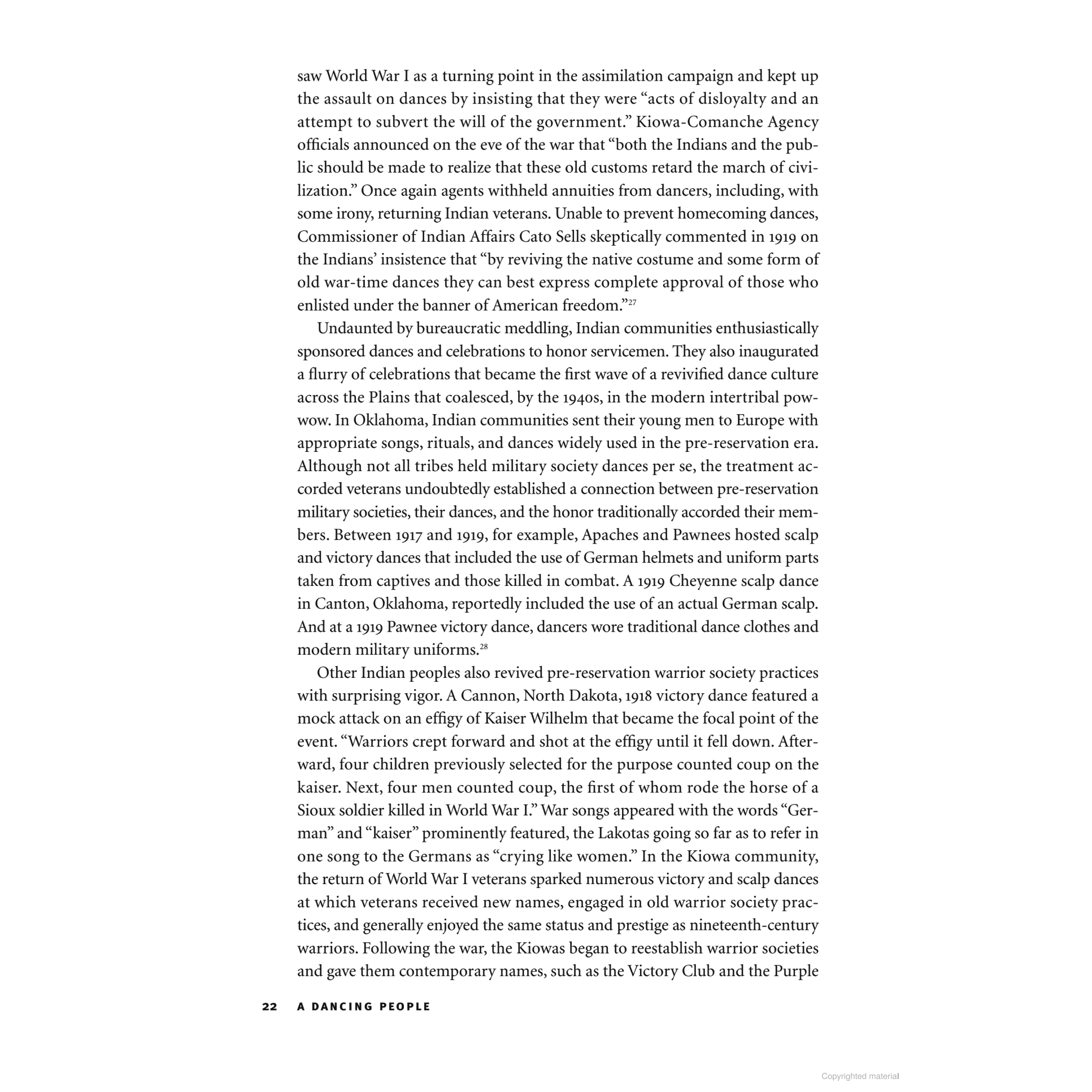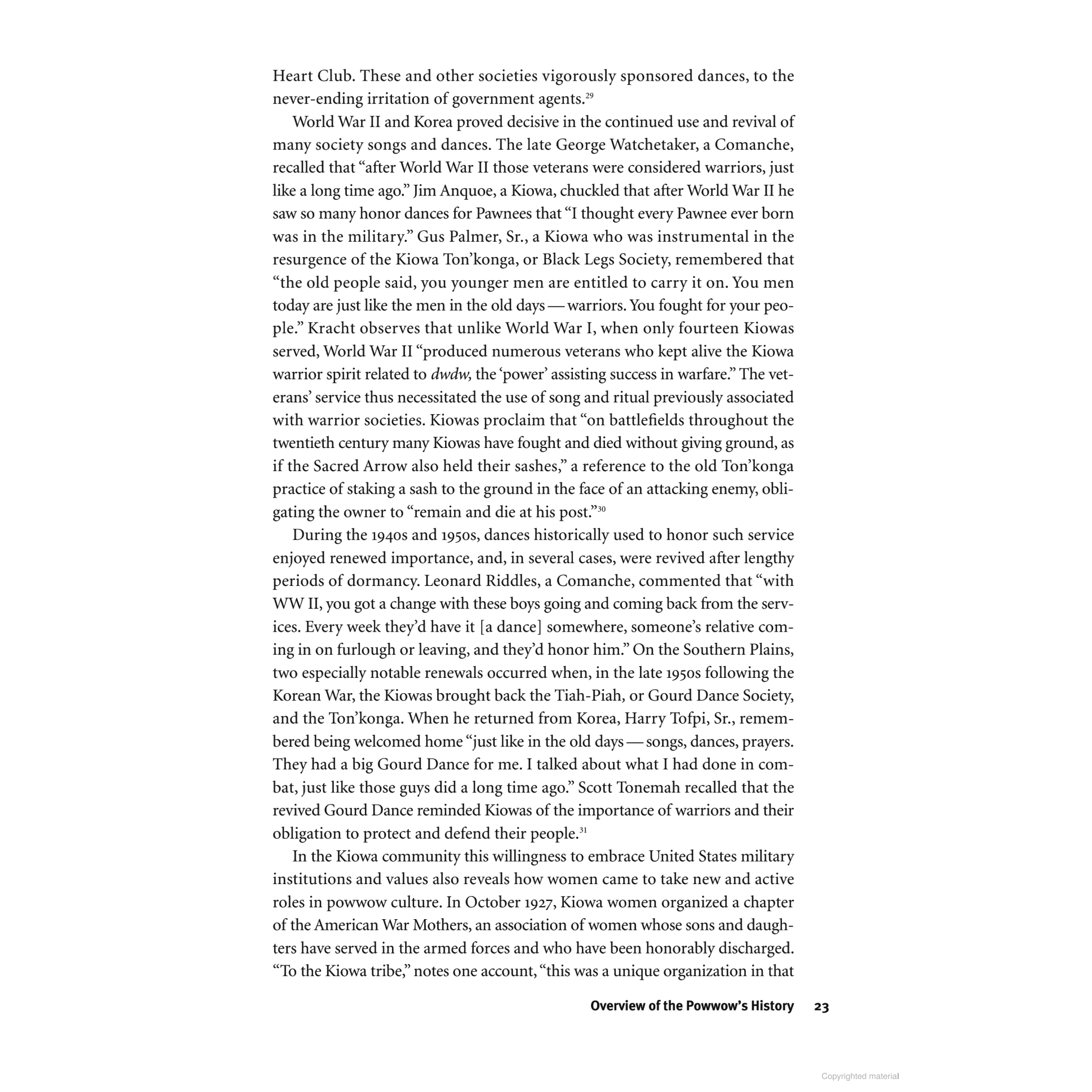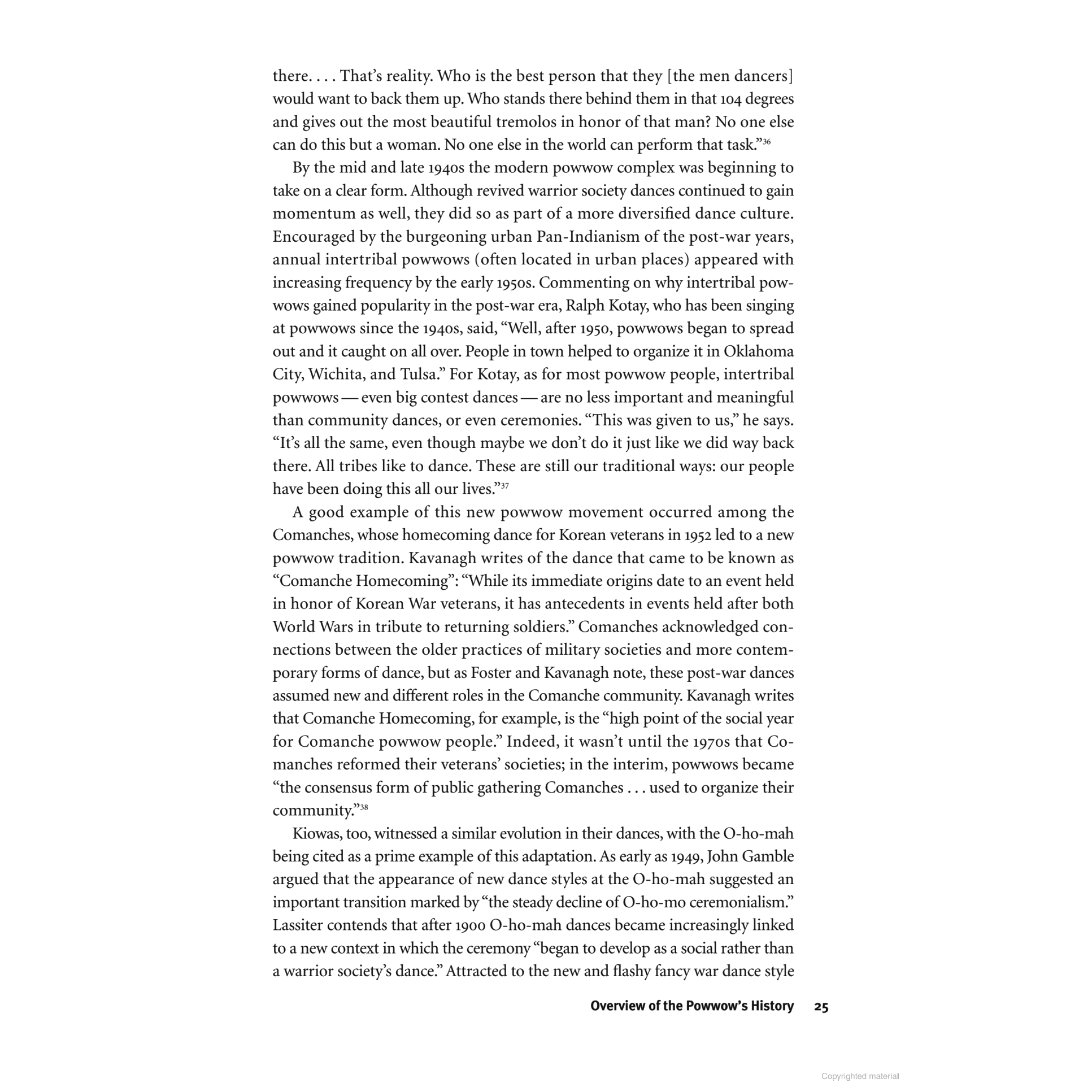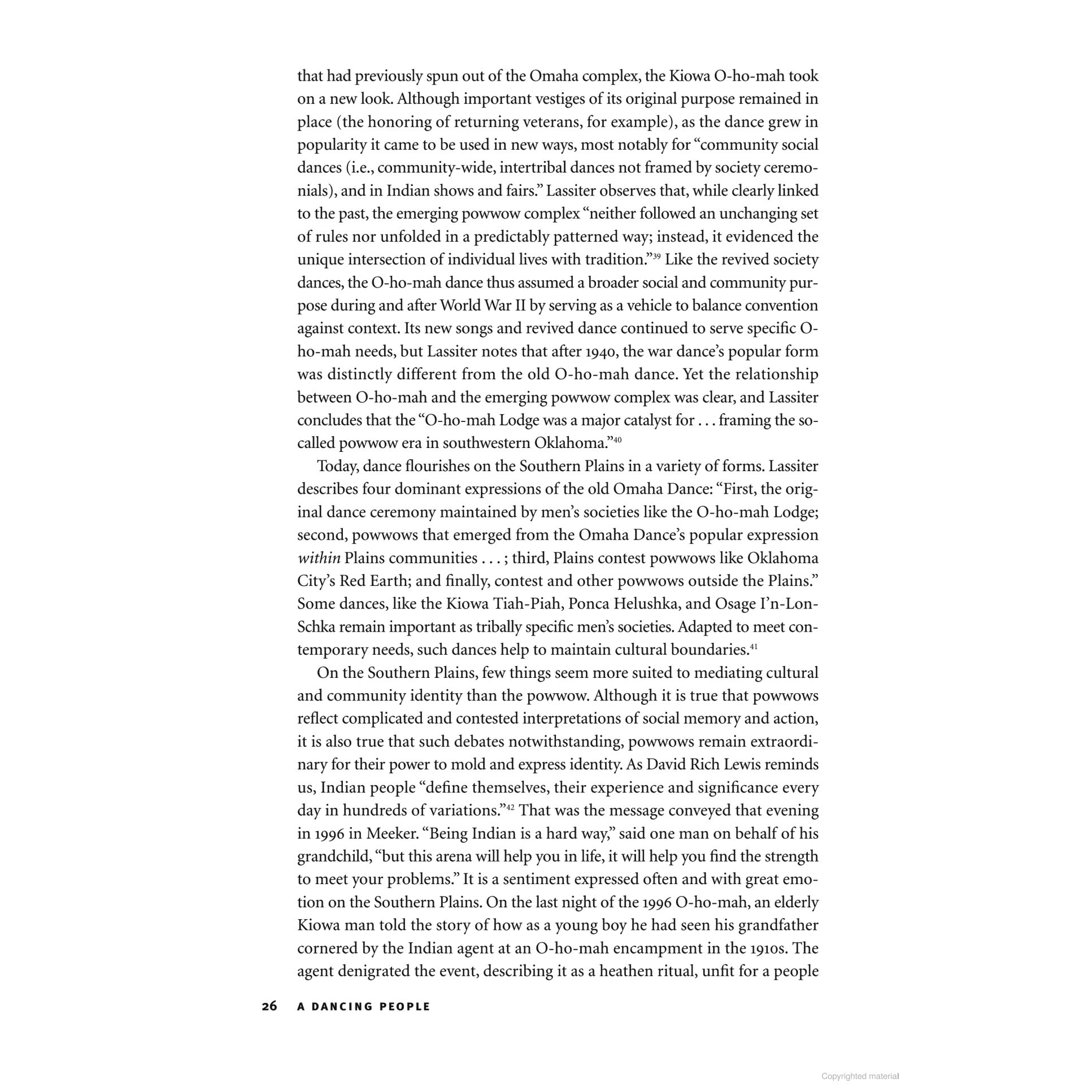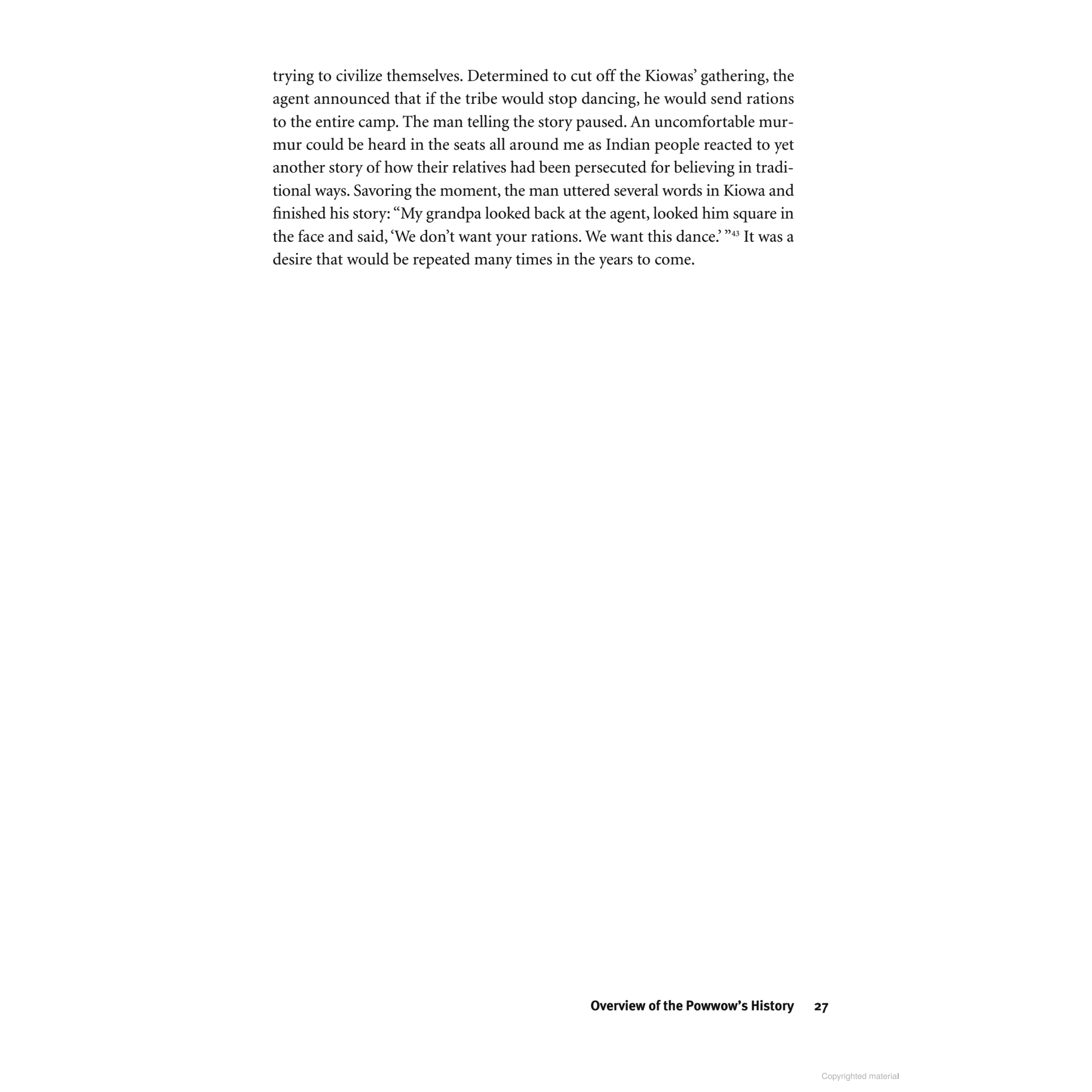1
/
of
32
A Dancing People: Powwow Culture on the Southern Plains by Clyde Ellis
A Dancing People: Powwow Culture on the Southern Plains by Clyde Ellis
Regular price
$19.95
Regular price
Sale price
$19.95
Unit price
/
per
Shipping calculated at checkout.
Couldn't load pickup availability
Everywhere they are dancing. From Oklahoma City's huge Red Earth celebration to fund-raising events at local high schools, powwows are a vital element of contemporary Indian life on the Southern Plains. Some see it as tradition, handed down through the generations. Others say it's been sullied by white participation and robbed of its spiritual
significance. But, during the past half century, the powwow has become one of the most popular and visible expressions of the dynamic cultural forces at work in Indian country today.
Clyde Ellis has written the first comprehensive history of Southern Plains powwow culture—an interdisciplinary, highly collaborative ethnography based on more than two decades of participation in powwows. In seeking to determine what "powwow people" mean by so designating themselves, he addresses how the powwow and its role in contemporary Indian identity have changed over time—along with its songs and dances—and how Indians for nearly a century have used dance to define themselves within their communities.
A Dancing People shows that, whether understood as an intertribal or tribally specific event, dancing often satisfies needs and obligations that are not met in other ways—and that many Southern Plains Indians organize their lives around dancing and the continuity of culture that it represents. As one Kiowa elder explained, "When I go to [these dances], I'm right where those old people were. Singing those songs, dancing where they danced. And my children and grandchildren, they've learned these ways, too, because it's good, it's powerful."
Ellis tells us not only why and how Southern Plains powwow culture originated, but also something about what it means. He explores powwow's cultural and historical roots, tracing suppression by government advocates of assimilation, Indian resistance movements, internal tribal disputes, and the emergence of powerful song and dance traditions. He also includes a series of conversations and interviews with powwow people in which they comment on why they go to dances and what the dances mean to them as Indian people.
An insightful study of performance, ritual, and culture, A Dancing People also makes an important statement about the search for identity among Native Americans today.
View full details
significance. But, during the past half century, the powwow has become one of the most popular and visible expressions of the dynamic cultural forces at work in Indian country today.
Clyde Ellis has written the first comprehensive history of Southern Plains powwow culture—an interdisciplinary, highly collaborative ethnography based on more than two decades of participation in powwows. In seeking to determine what "powwow people" mean by so designating themselves, he addresses how the powwow and its role in contemporary Indian identity have changed over time—along with its songs and dances—and how Indians for nearly a century have used dance to define themselves within their communities.
A Dancing People shows that, whether understood as an intertribal or tribally specific event, dancing often satisfies needs and obligations that are not met in other ways—and that many Southern Plains Indians organize their lives around dancing and the continuity of culture that it represents. As one Kiowa elder explained, "When I go to [these dances], I'm right where those old people were. Singing those songs, dancing where they danced. And my children and grandchildren, they've learned these ways, too, because it's good, it's powerful."
Ellis tells us not only why and how Southern Plains powwow culture originated, but also something about what it means. He explores powwow's cultural and historical roots, tracing suppression by government advocates of assimilation, Indian resistance movements, internal tribal disputes, and the emergence of powerful song and dance traditions. He also includes a series of conversations and interviews with powwow people in which they comment on why they go to dances and what the dances mean to them as Indian people.
An insightful study of performance, ritual, and culture, A Dancing People also makes an important statement about the search for identity among Native Americans today.
